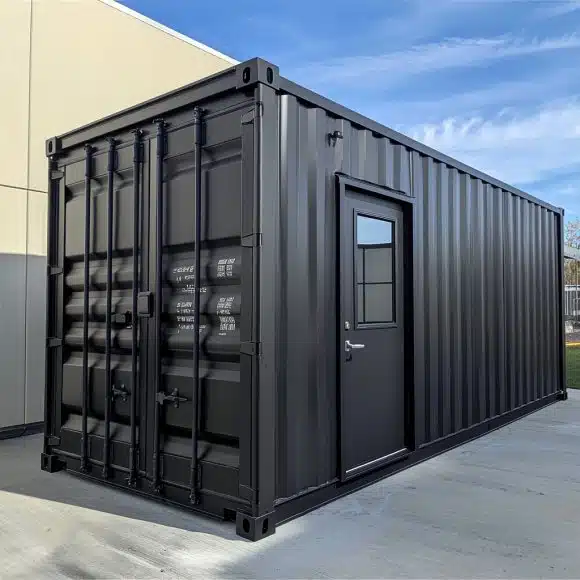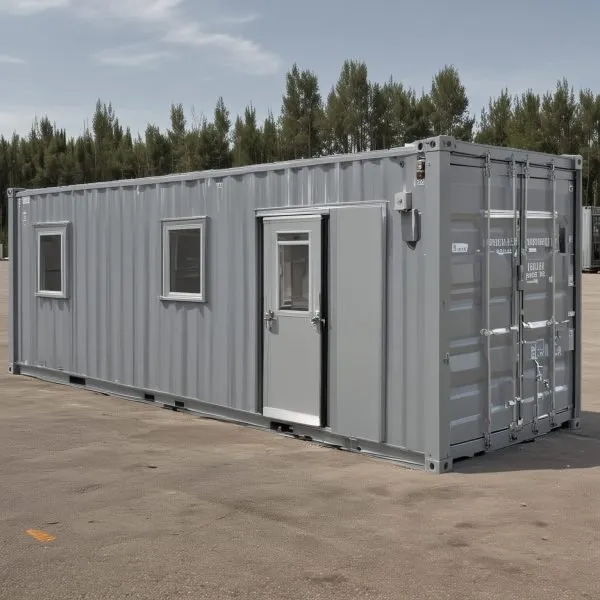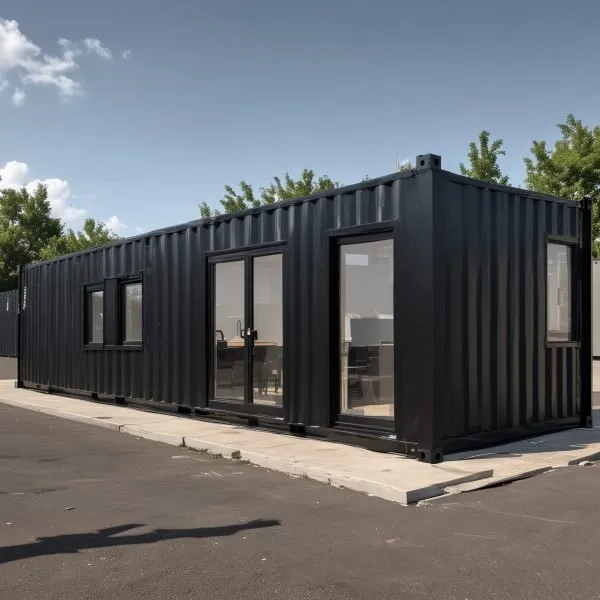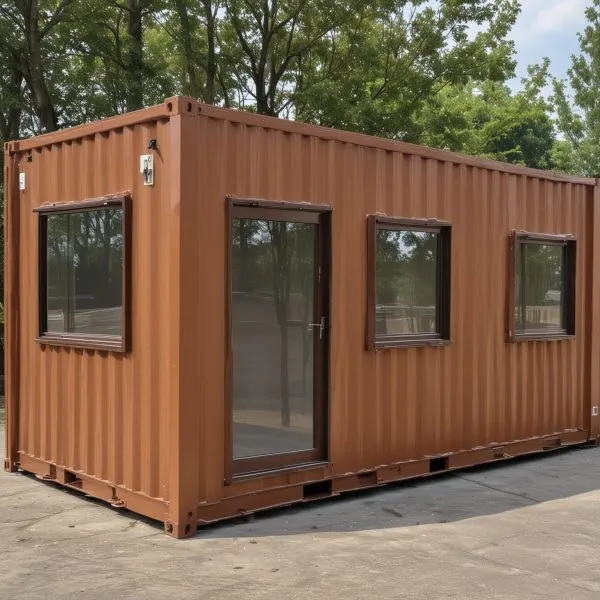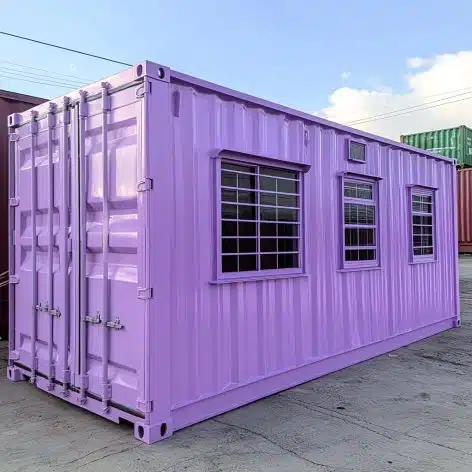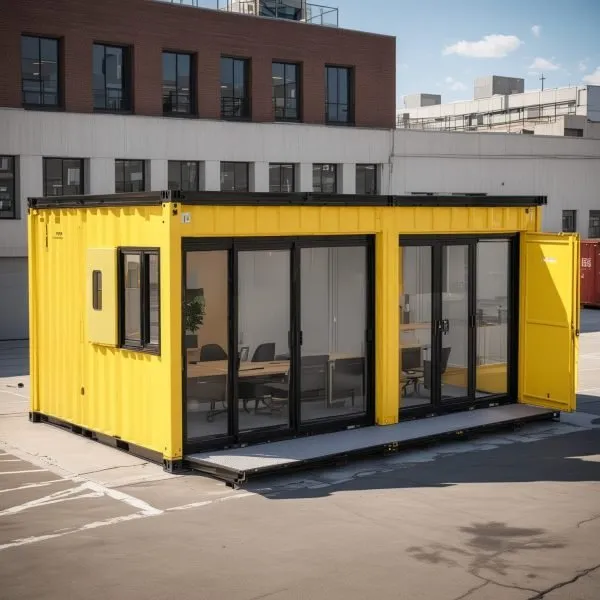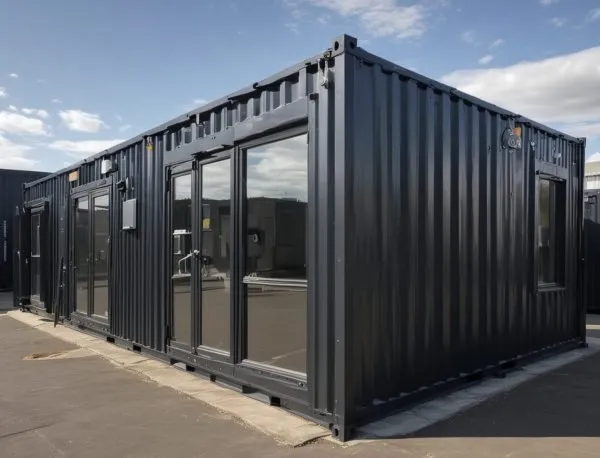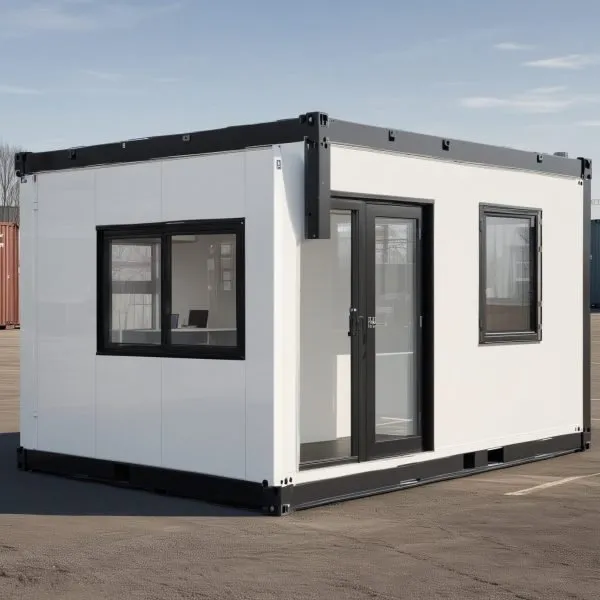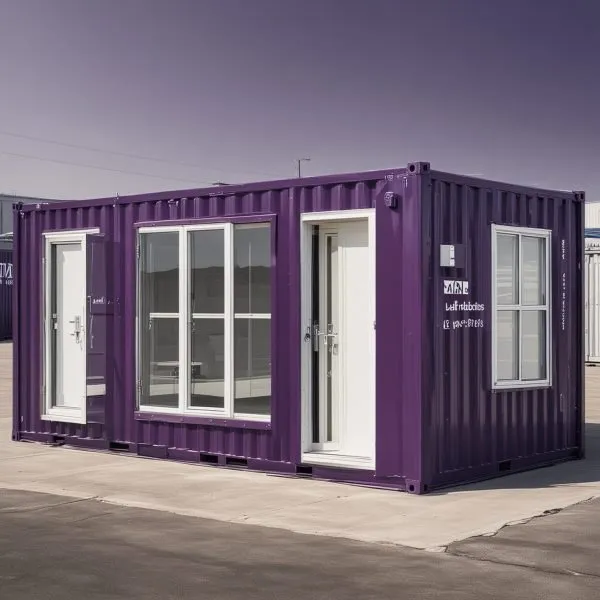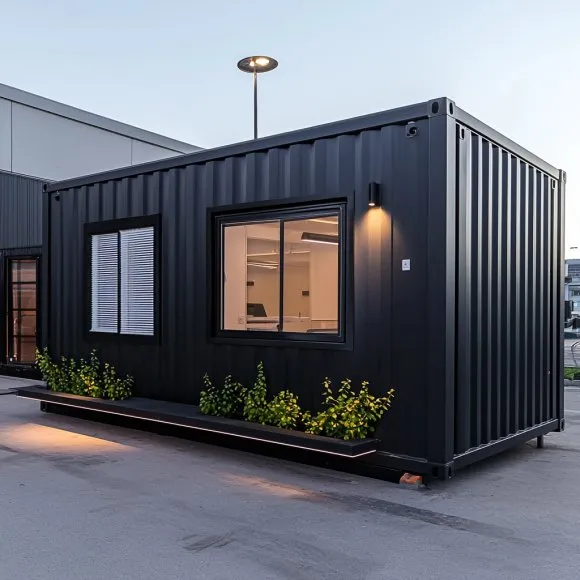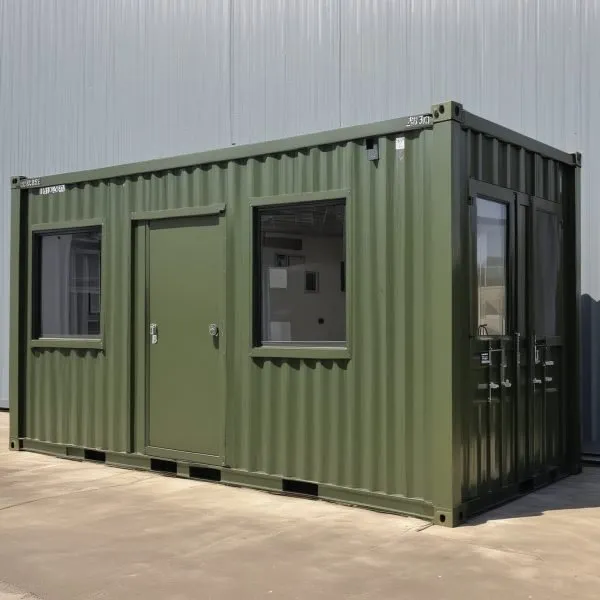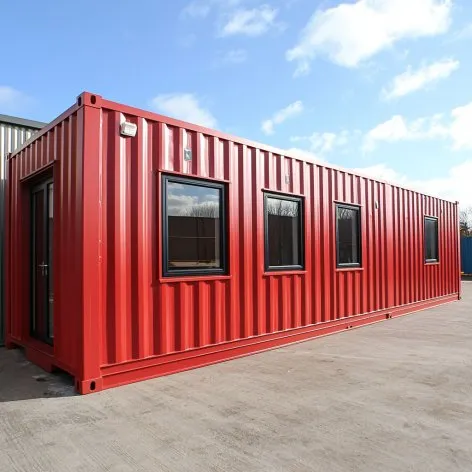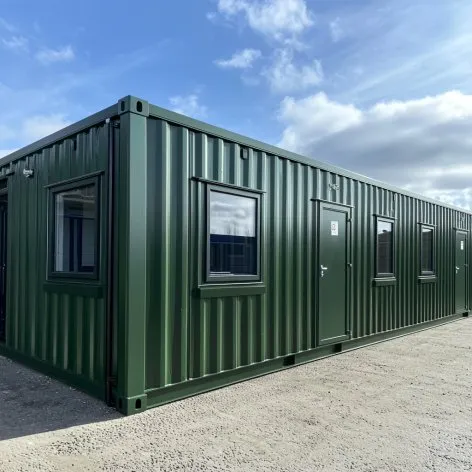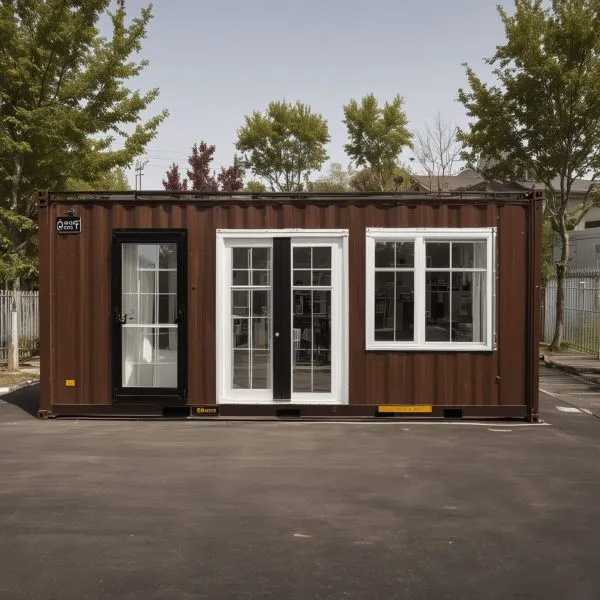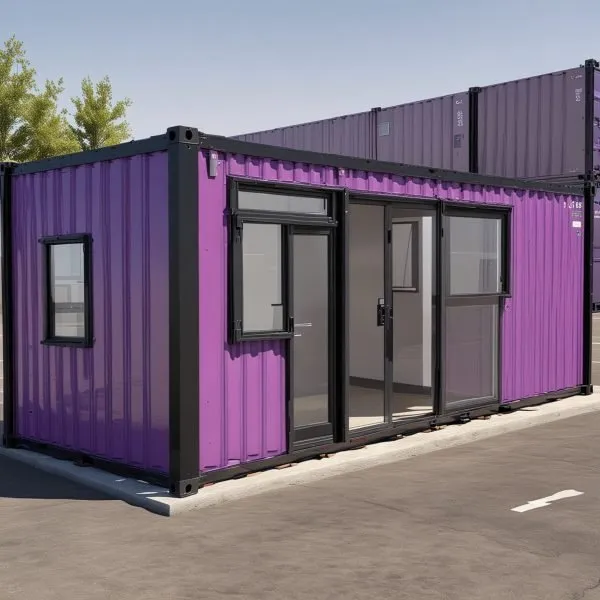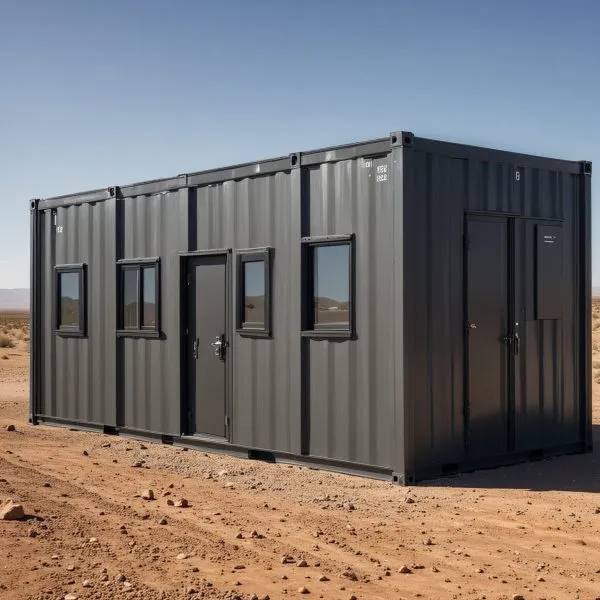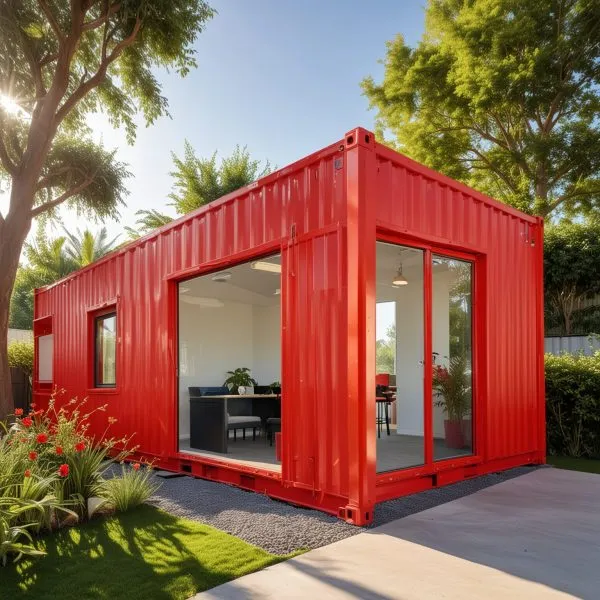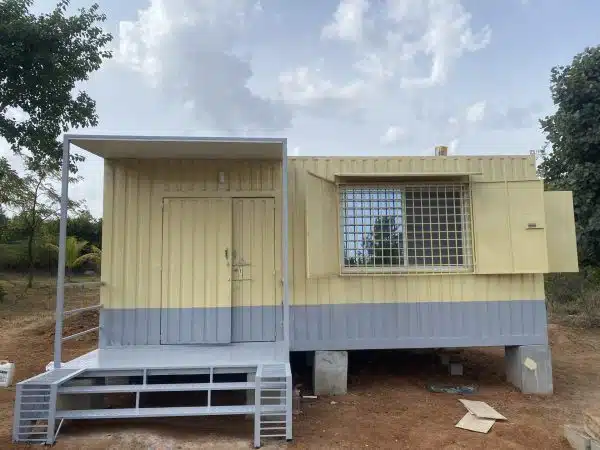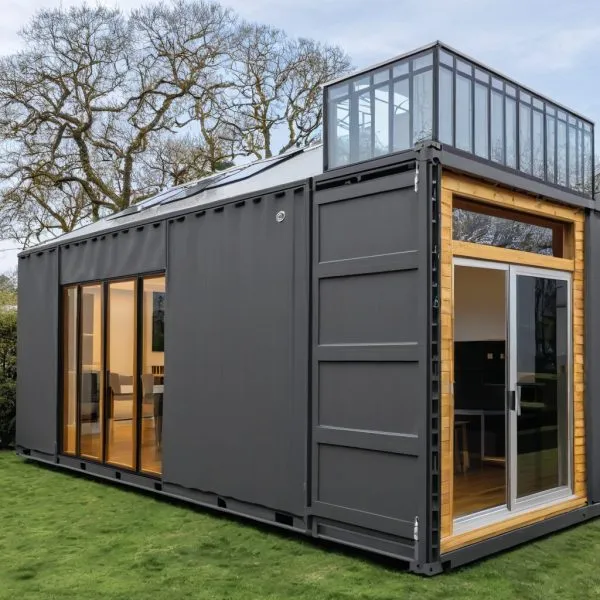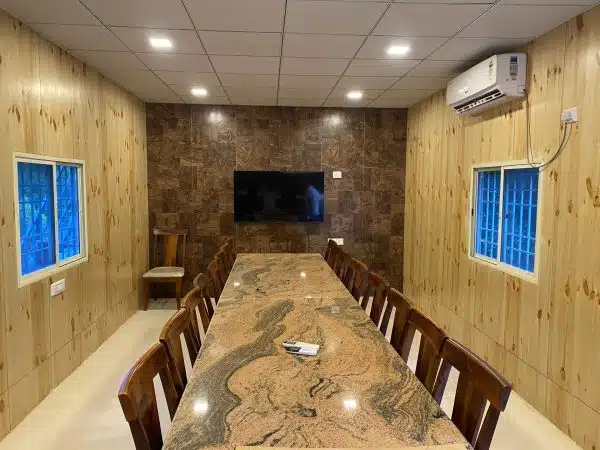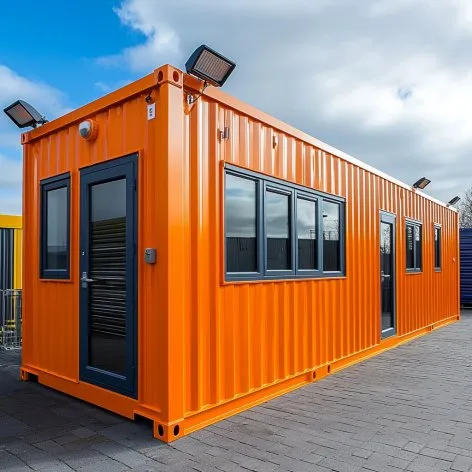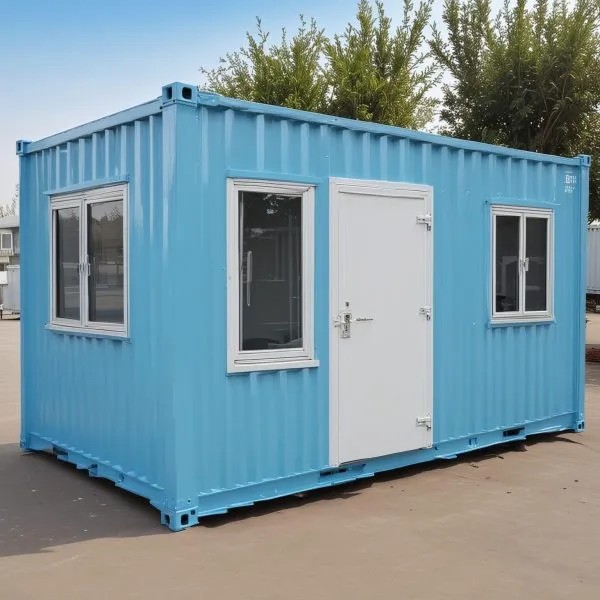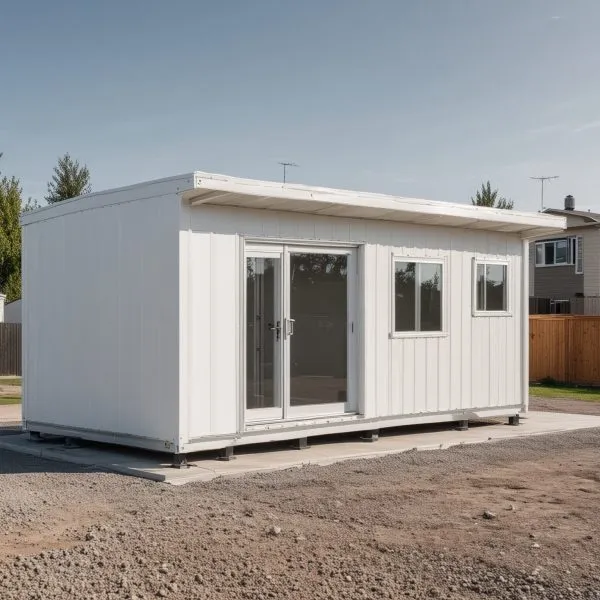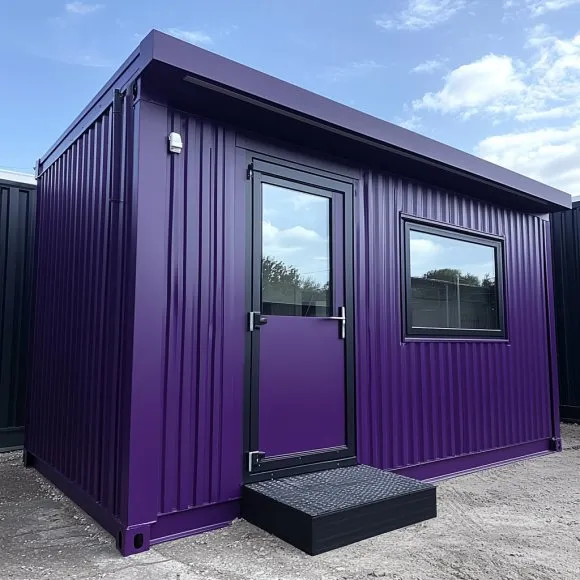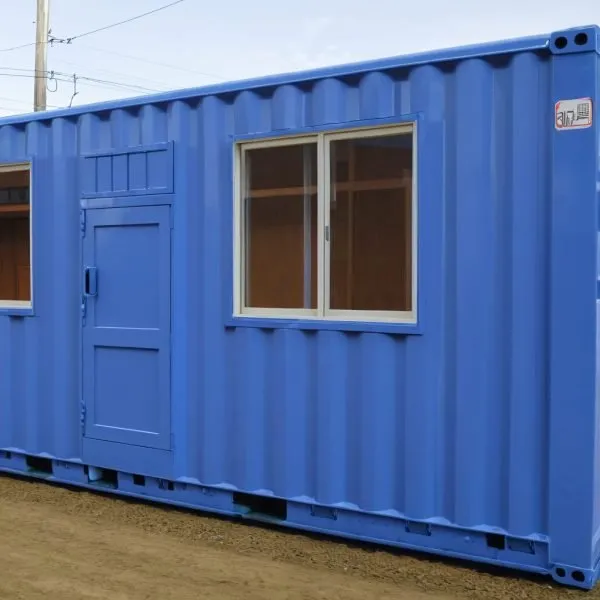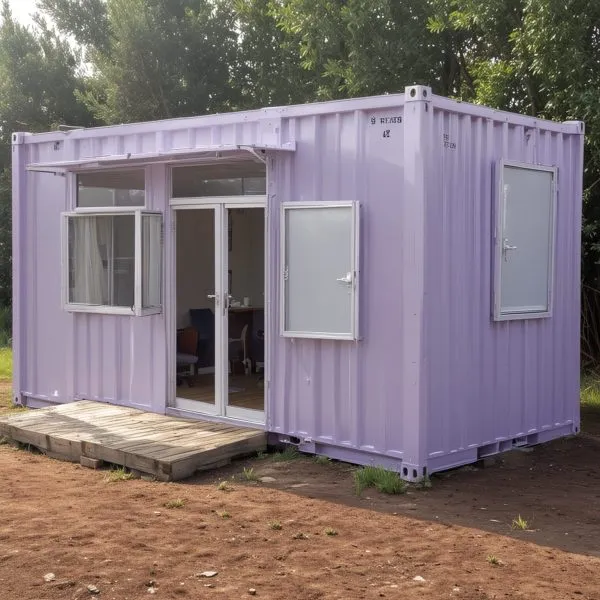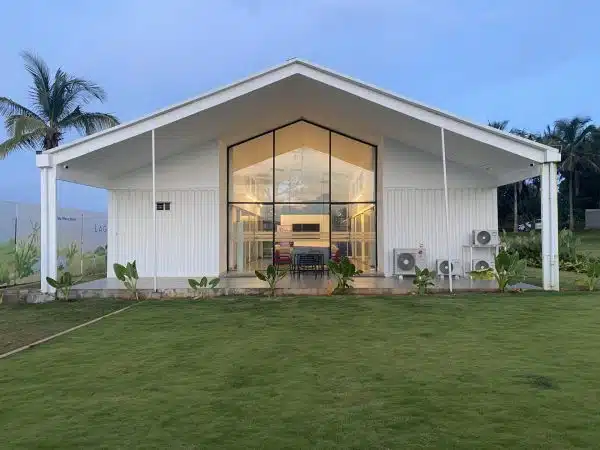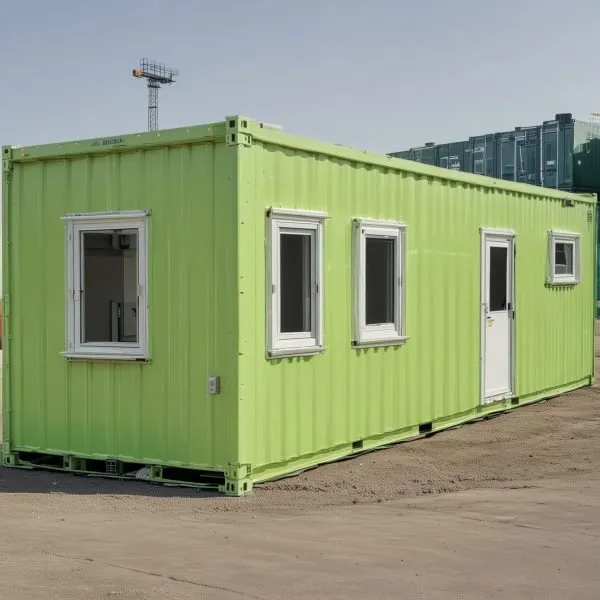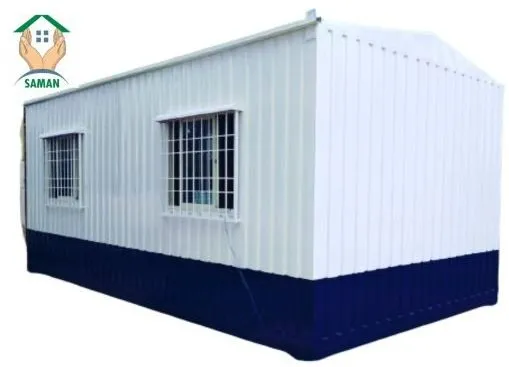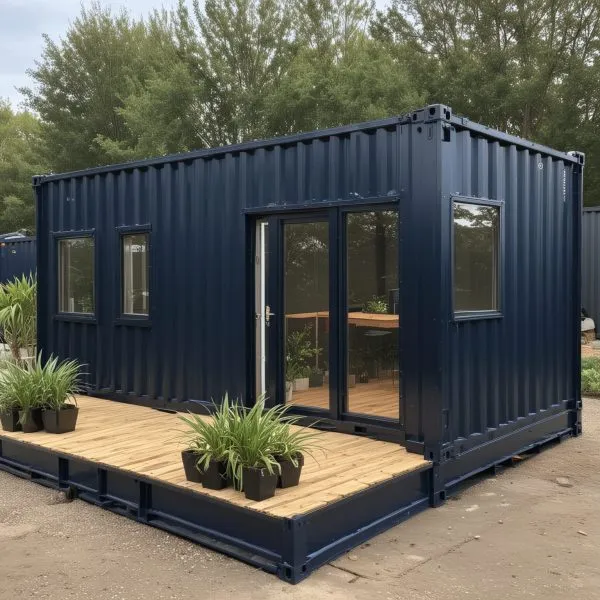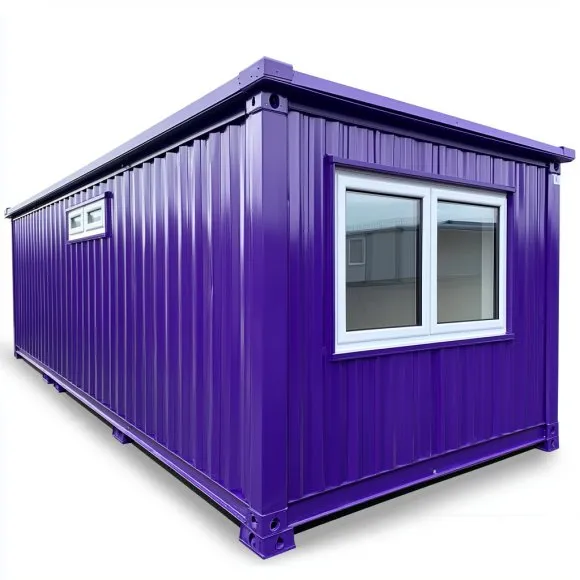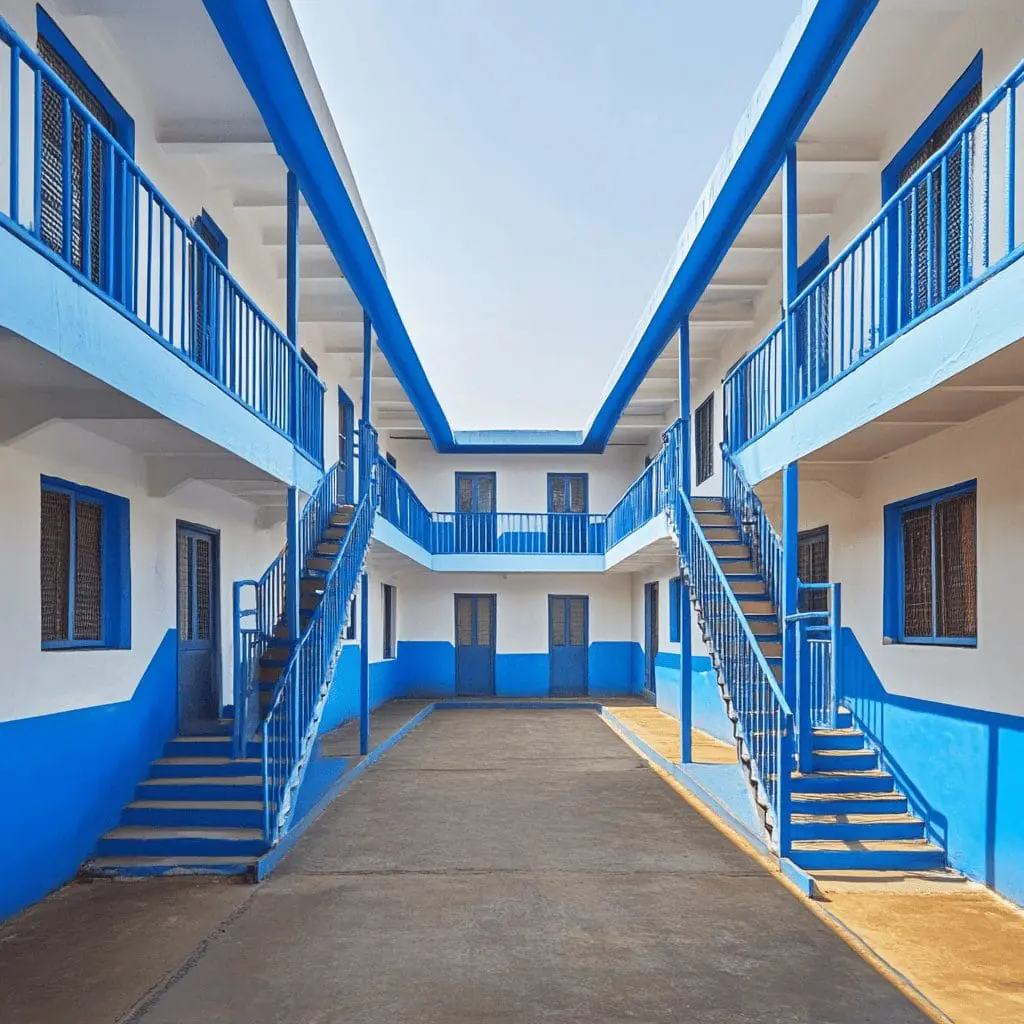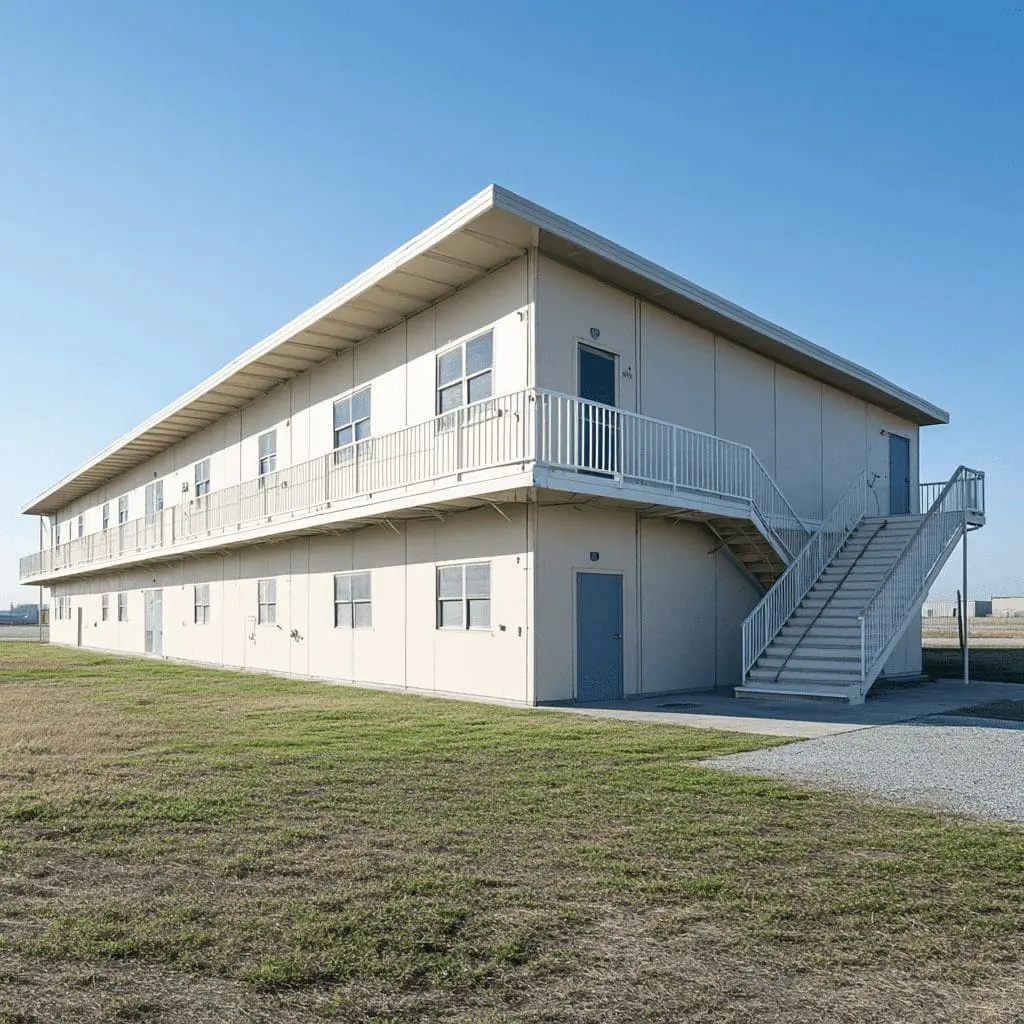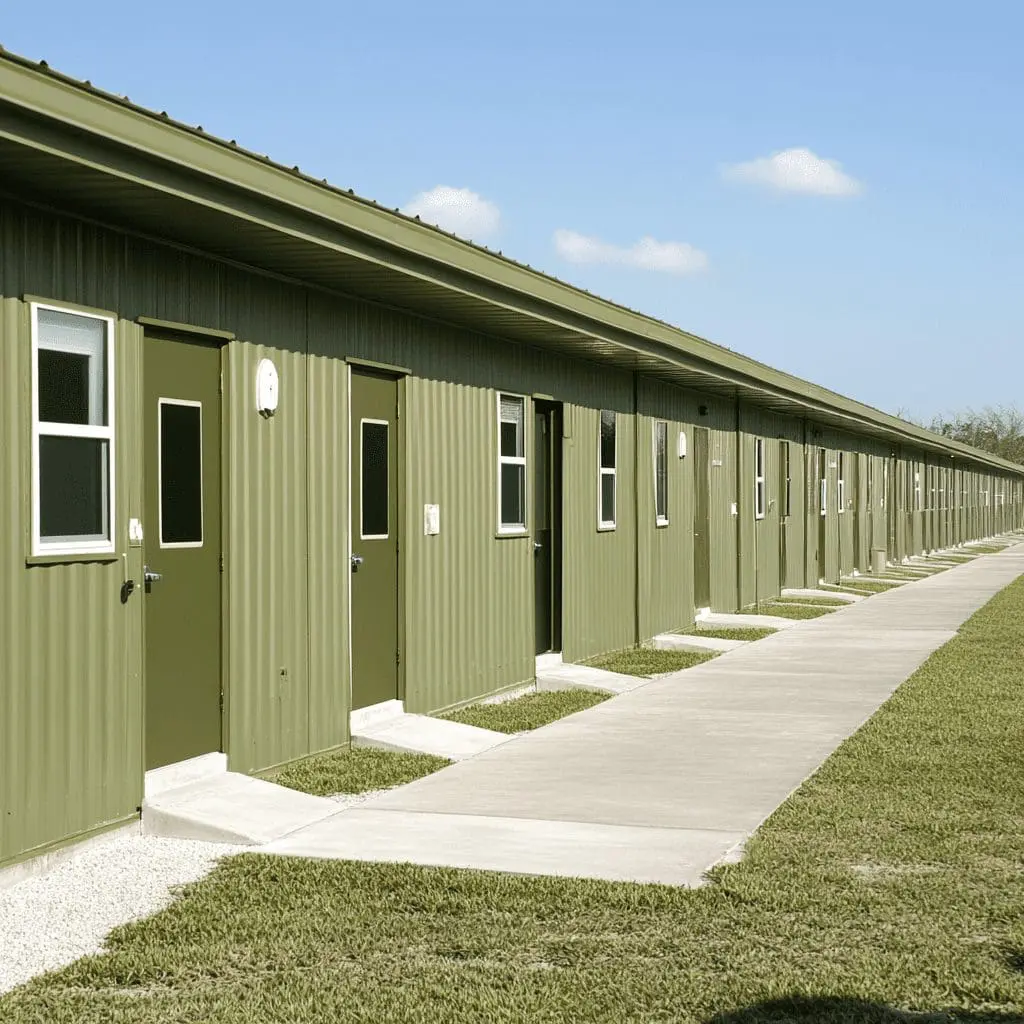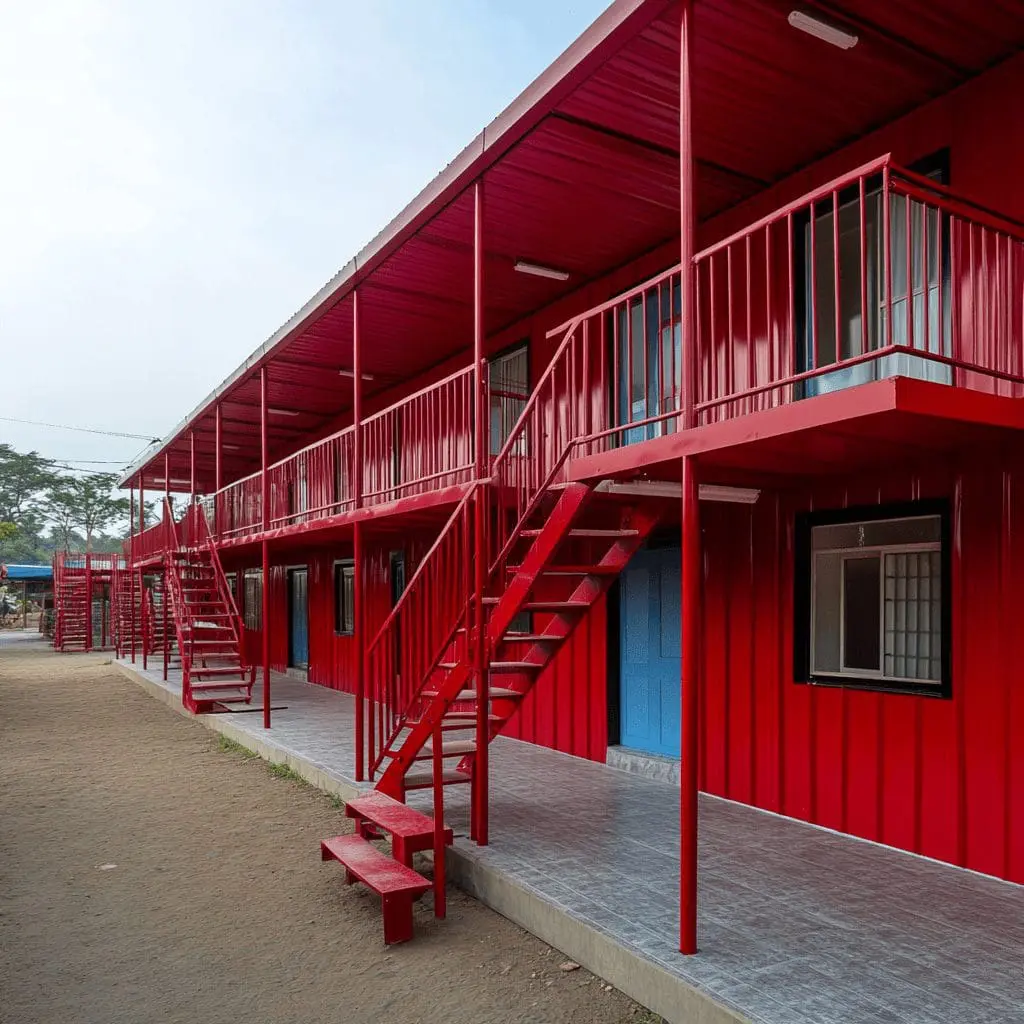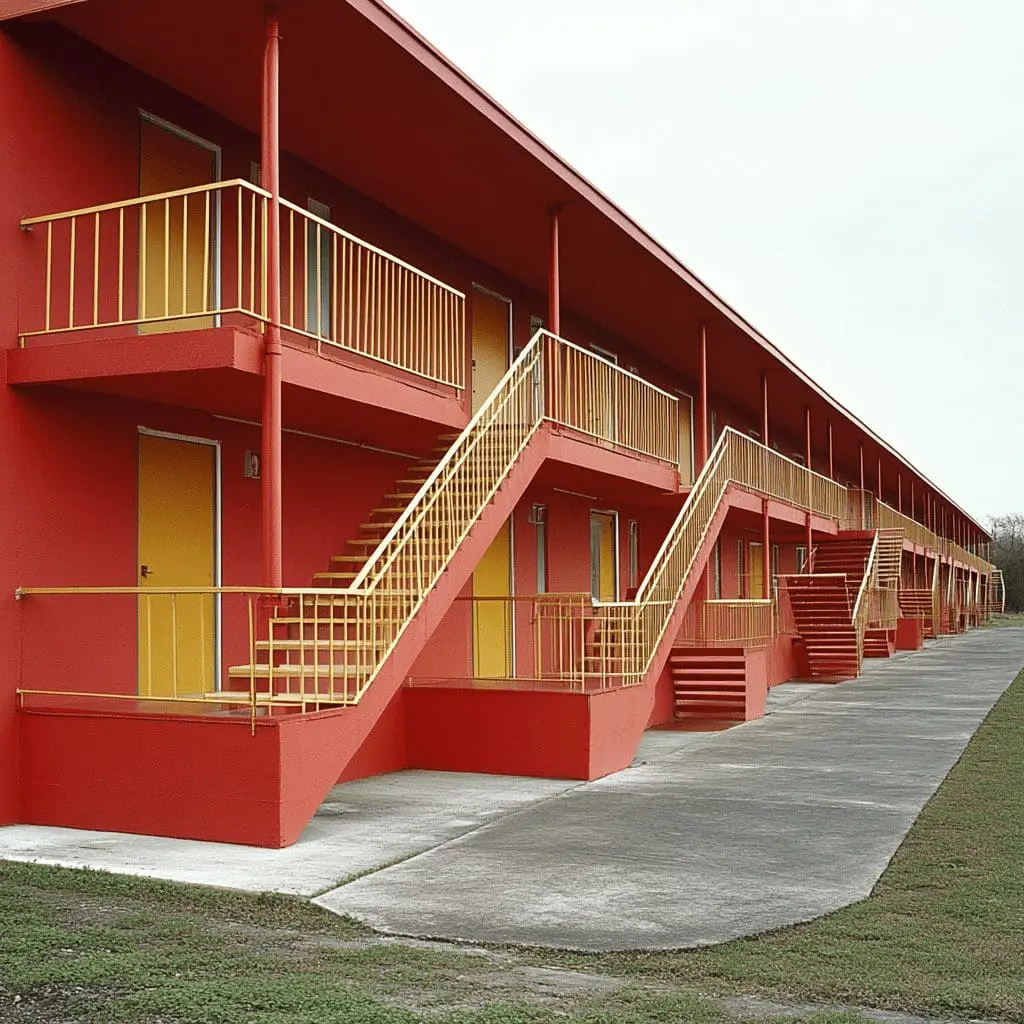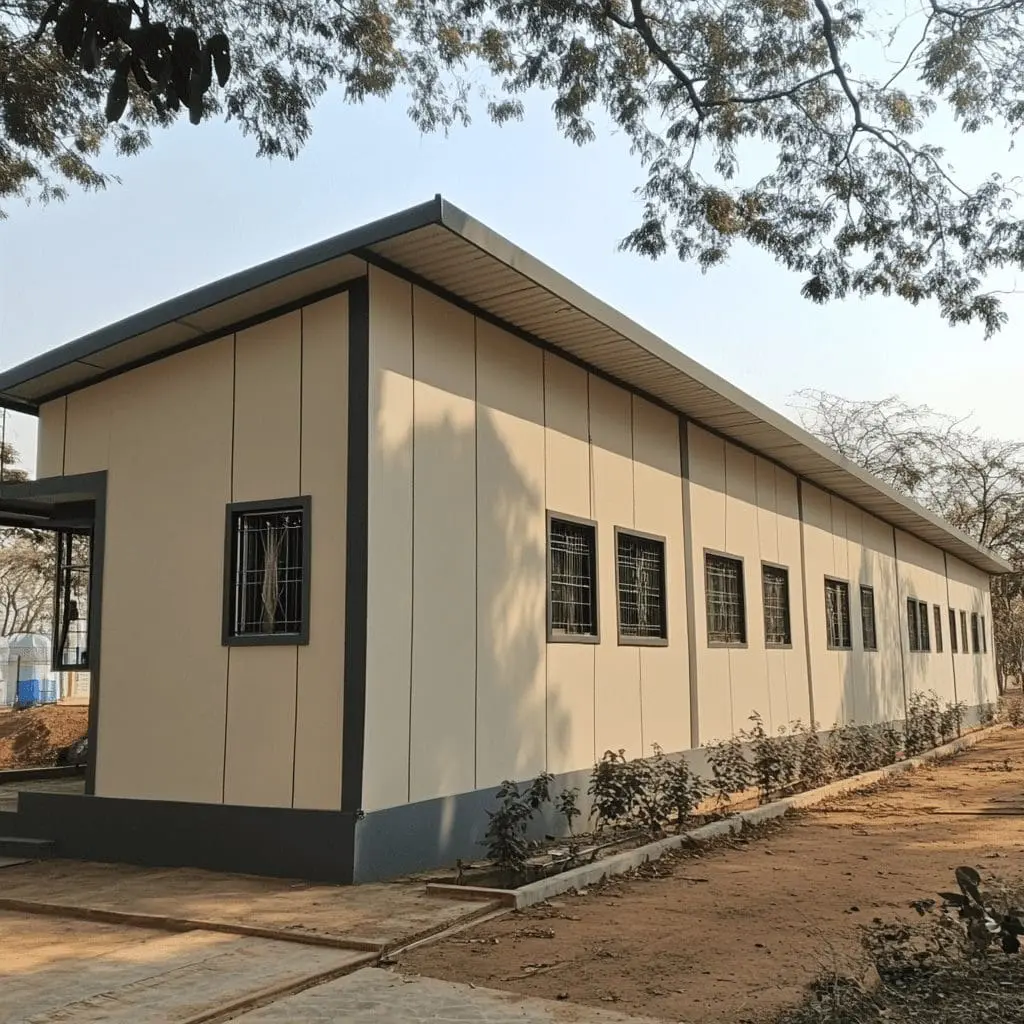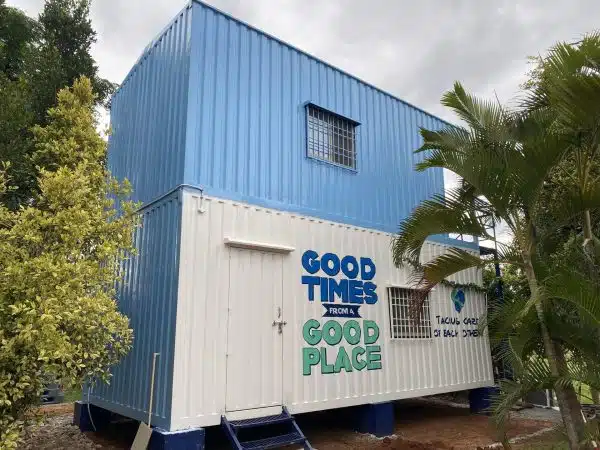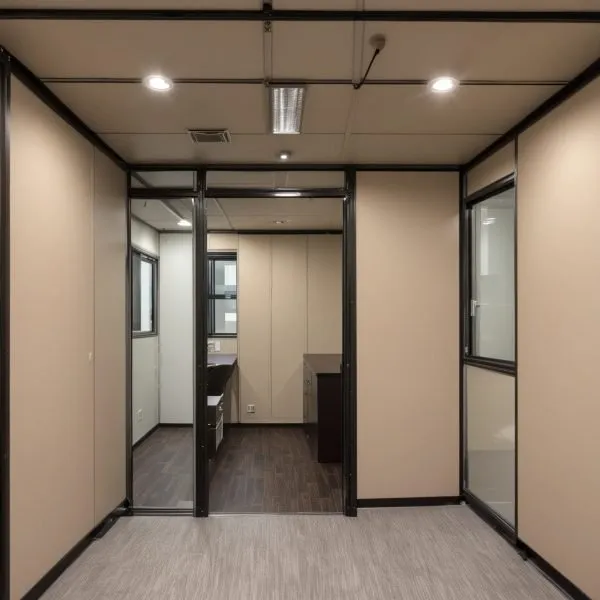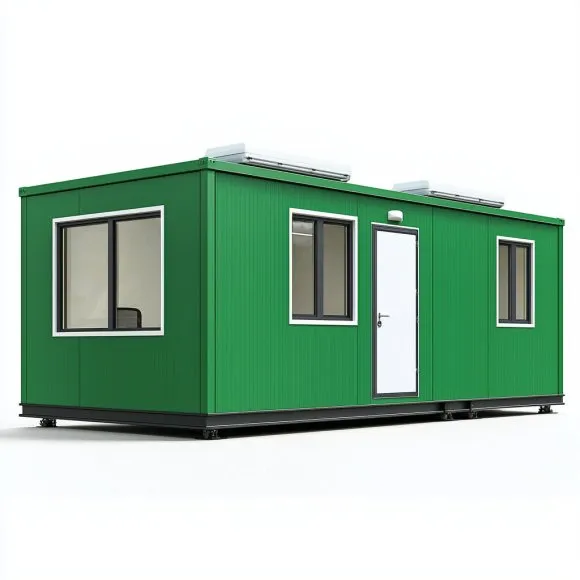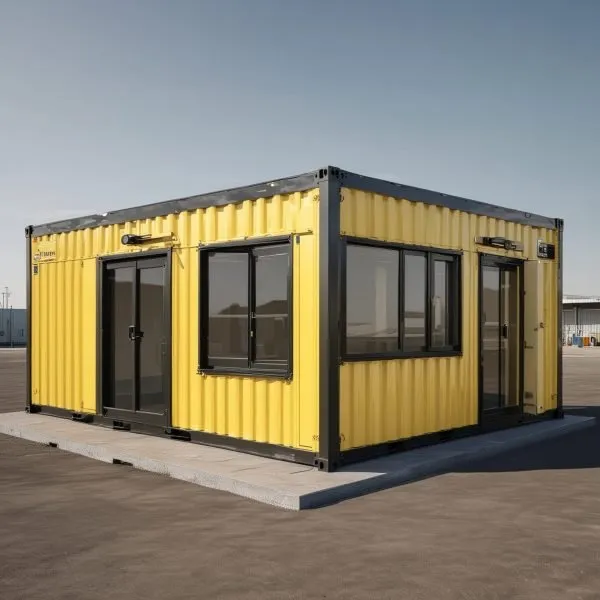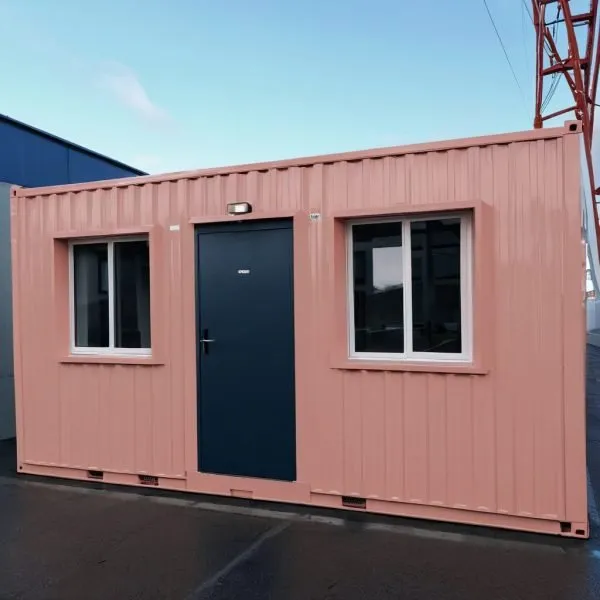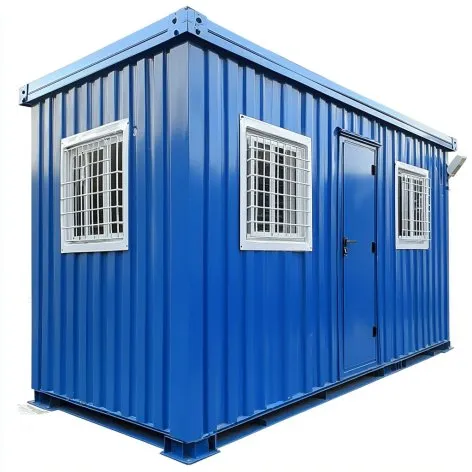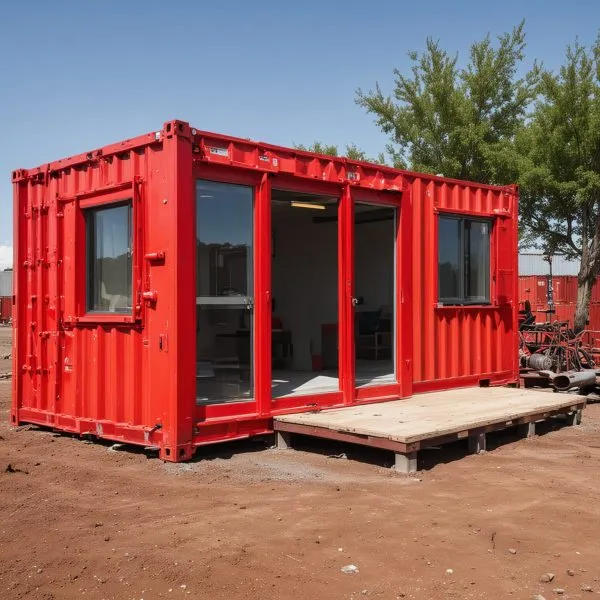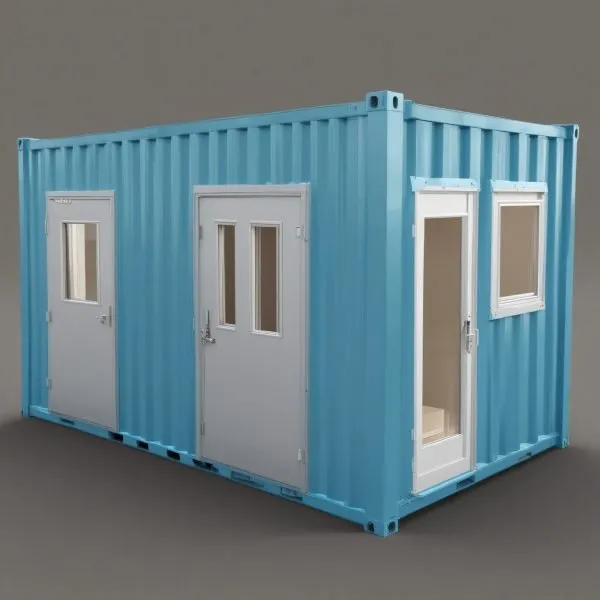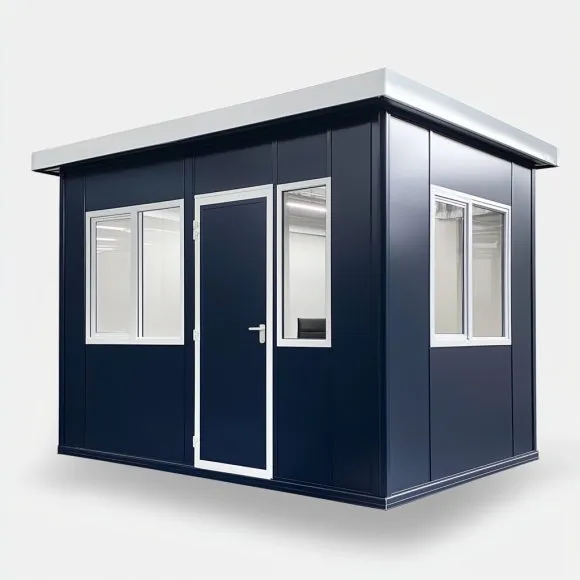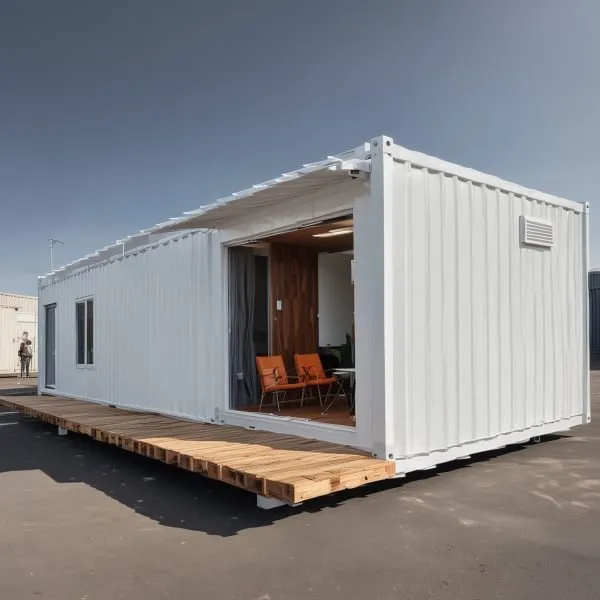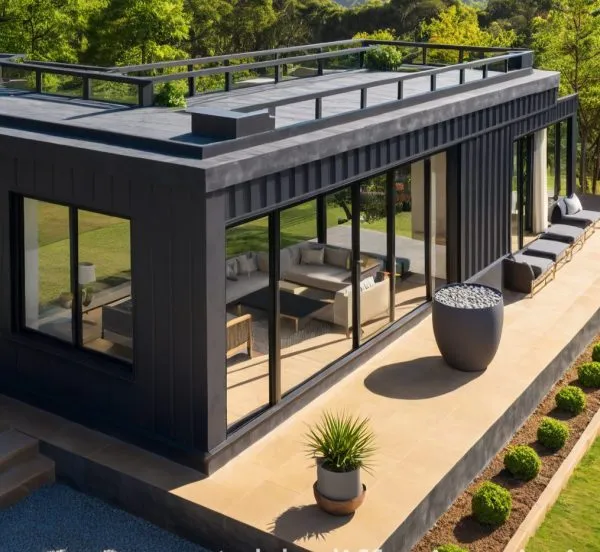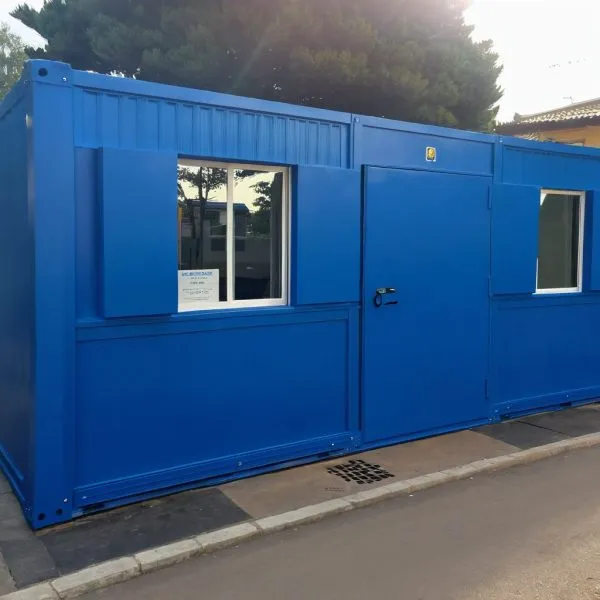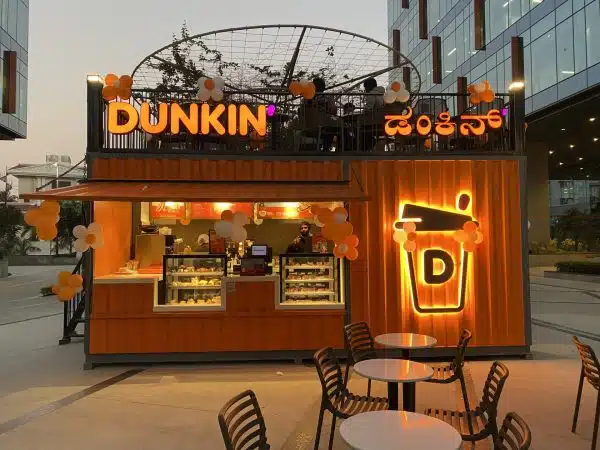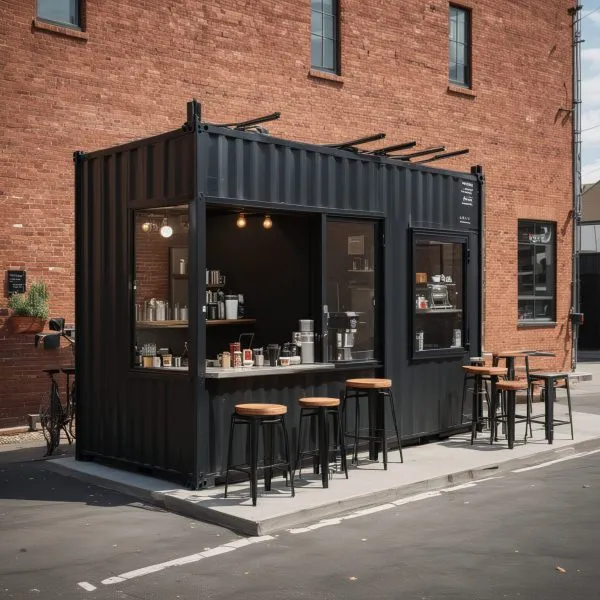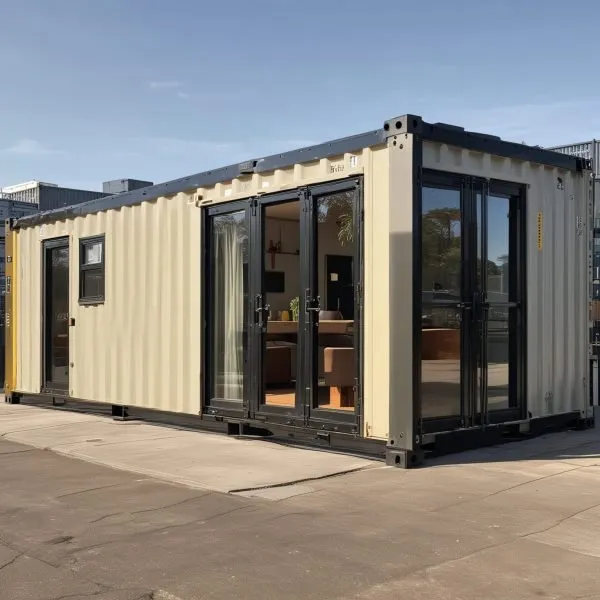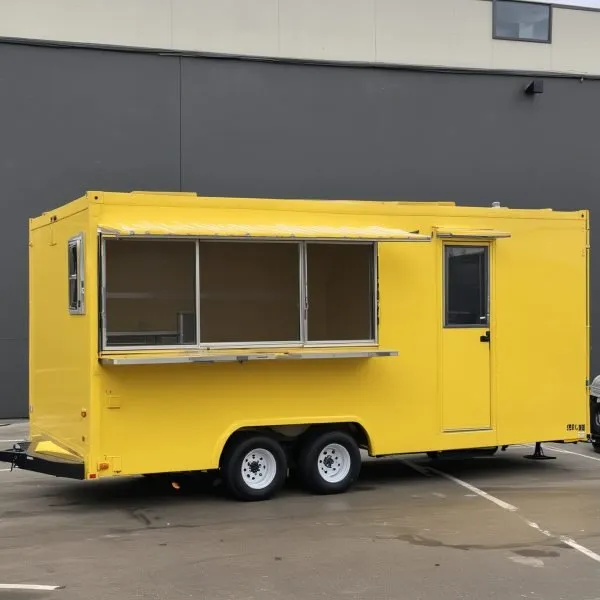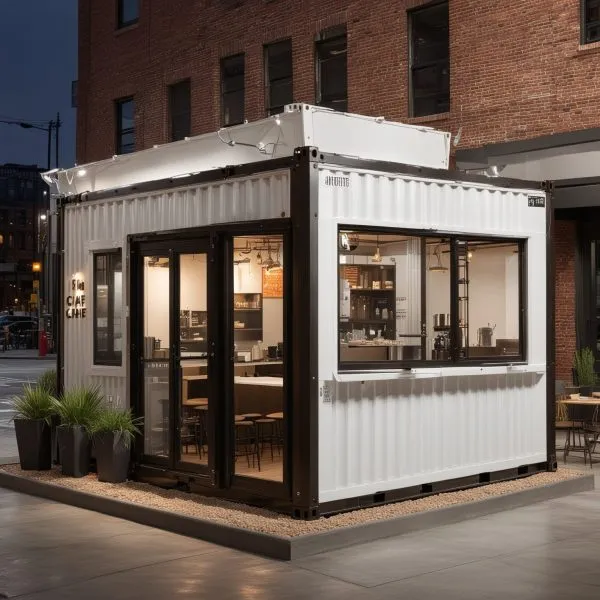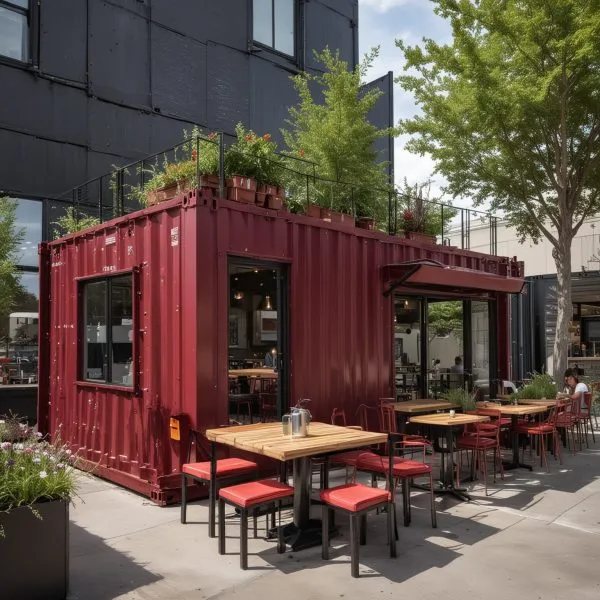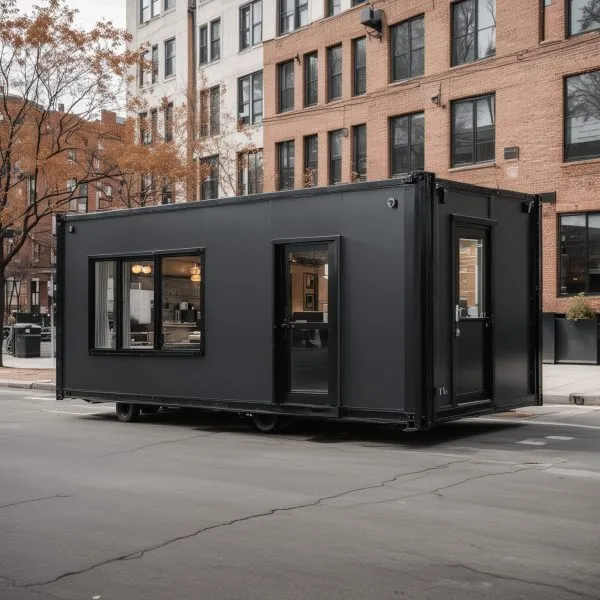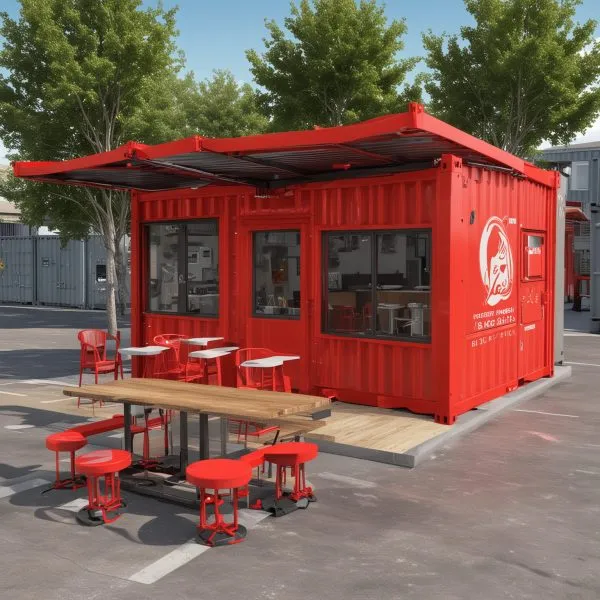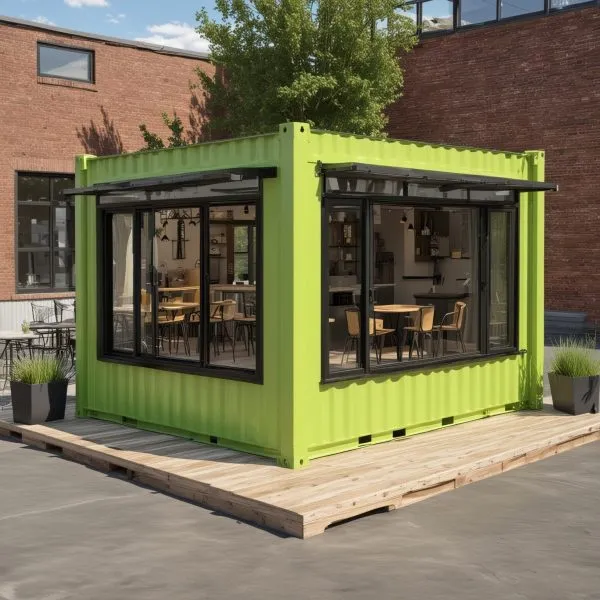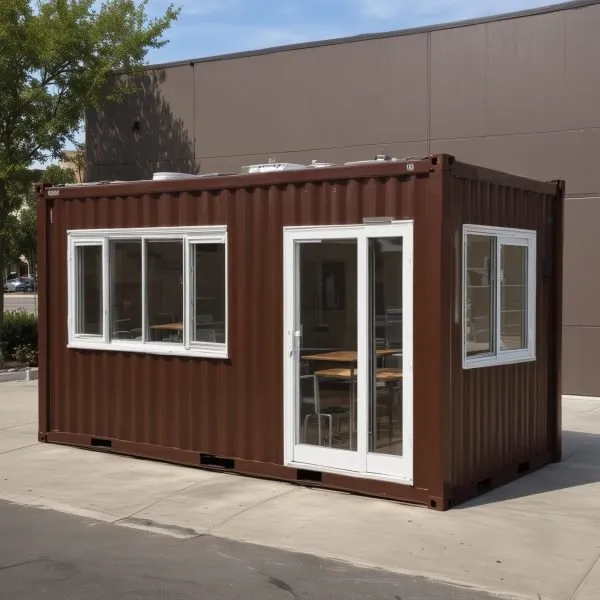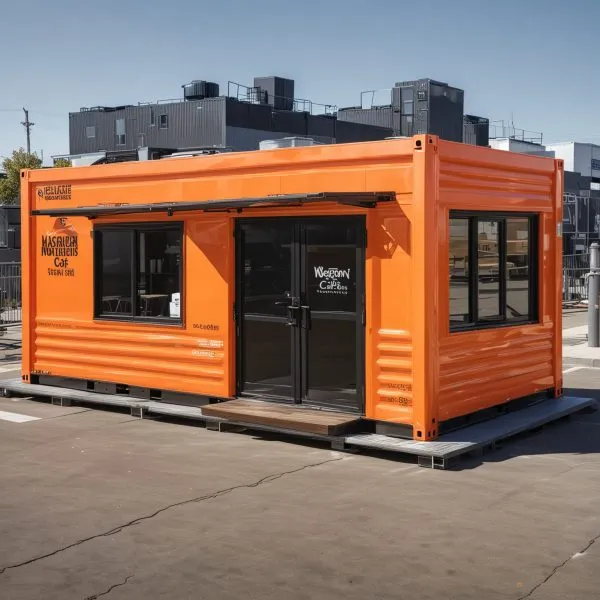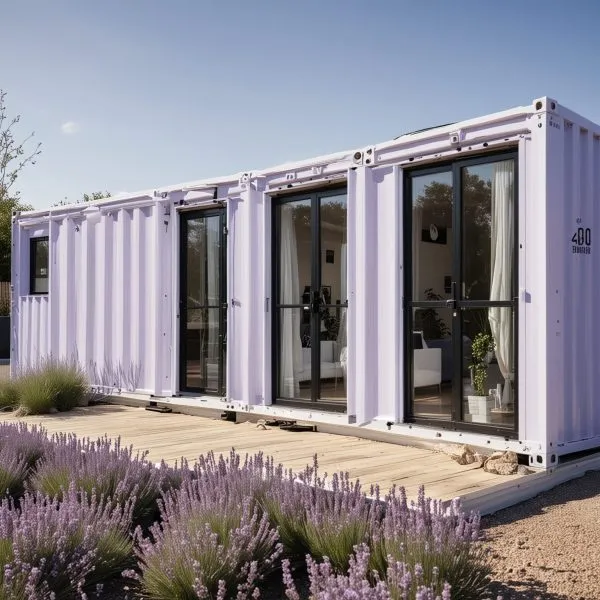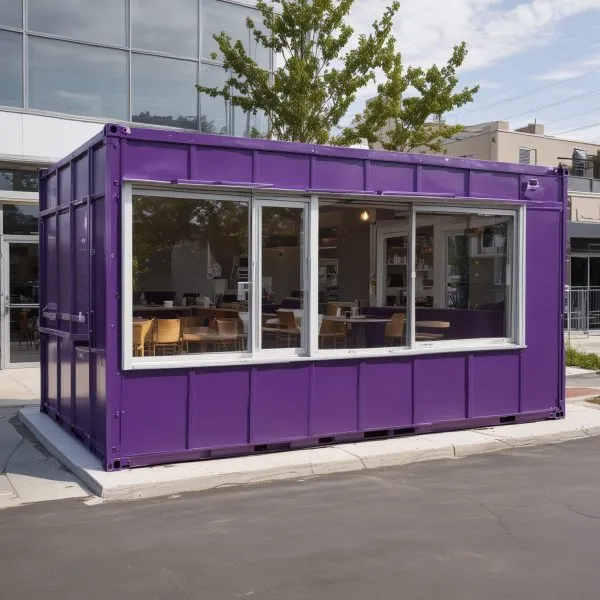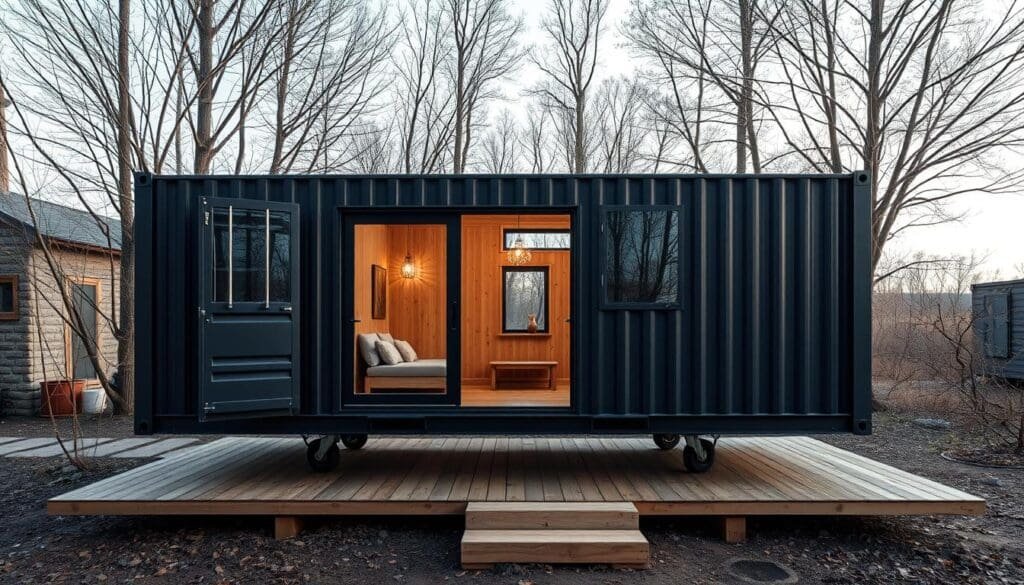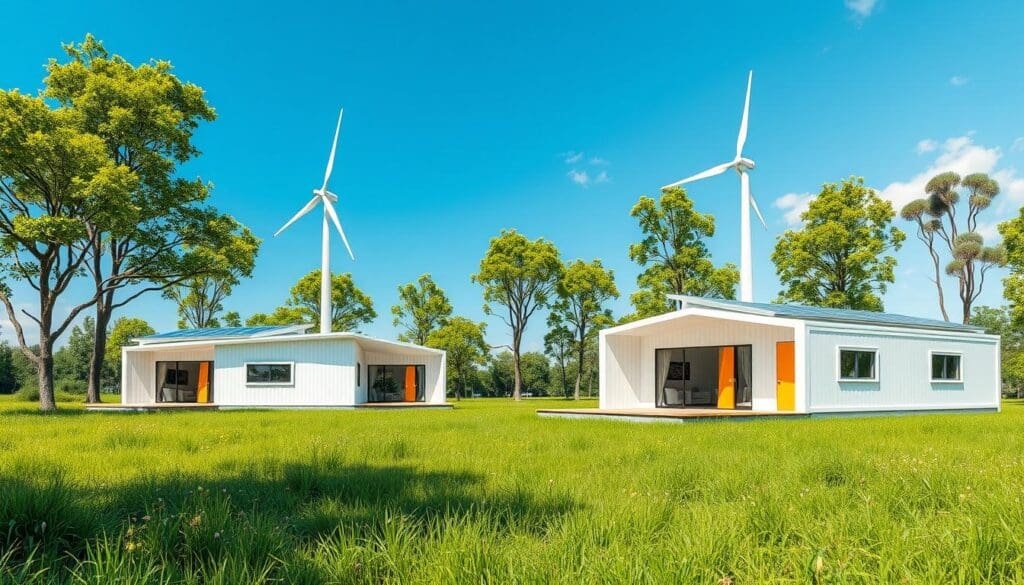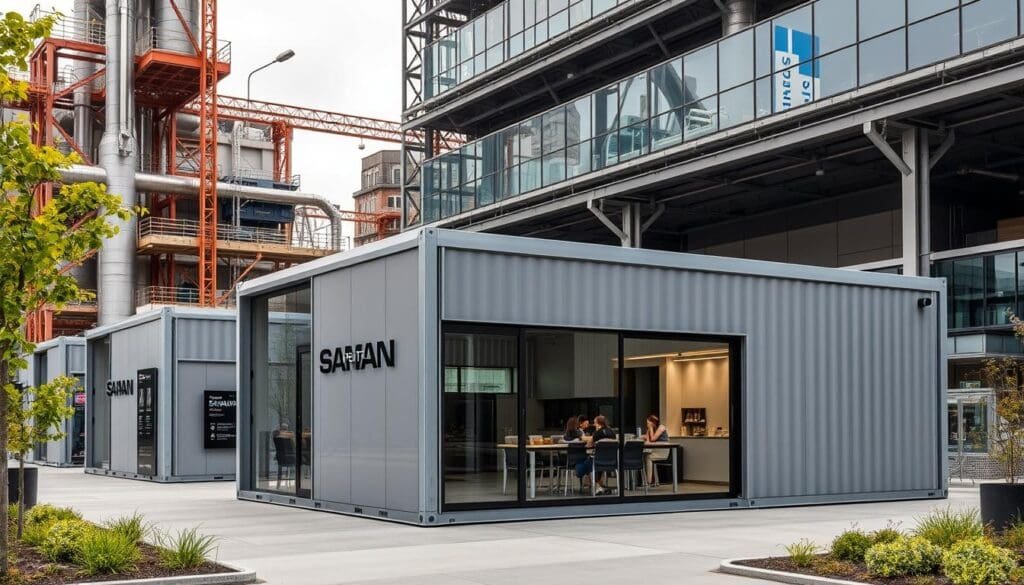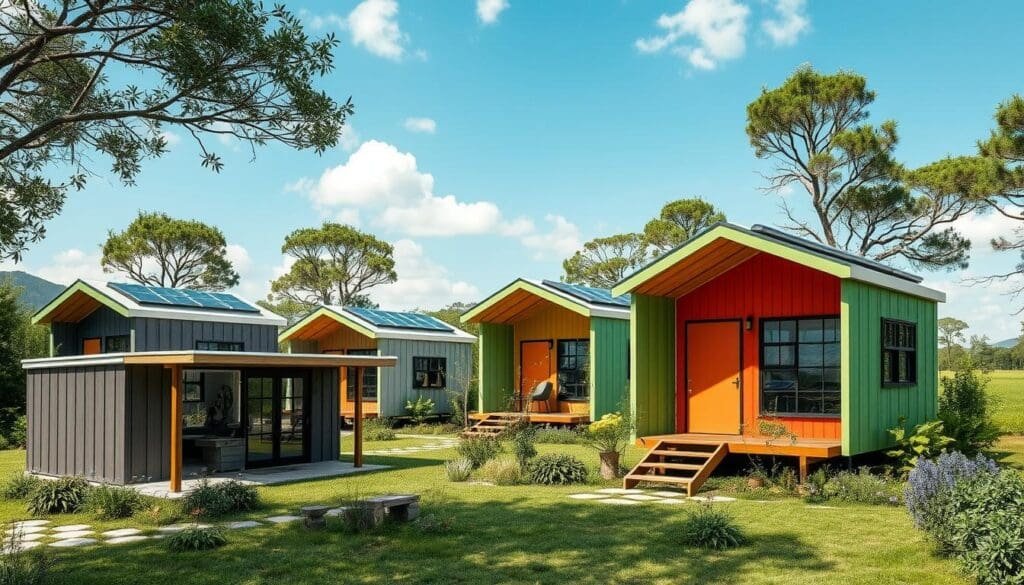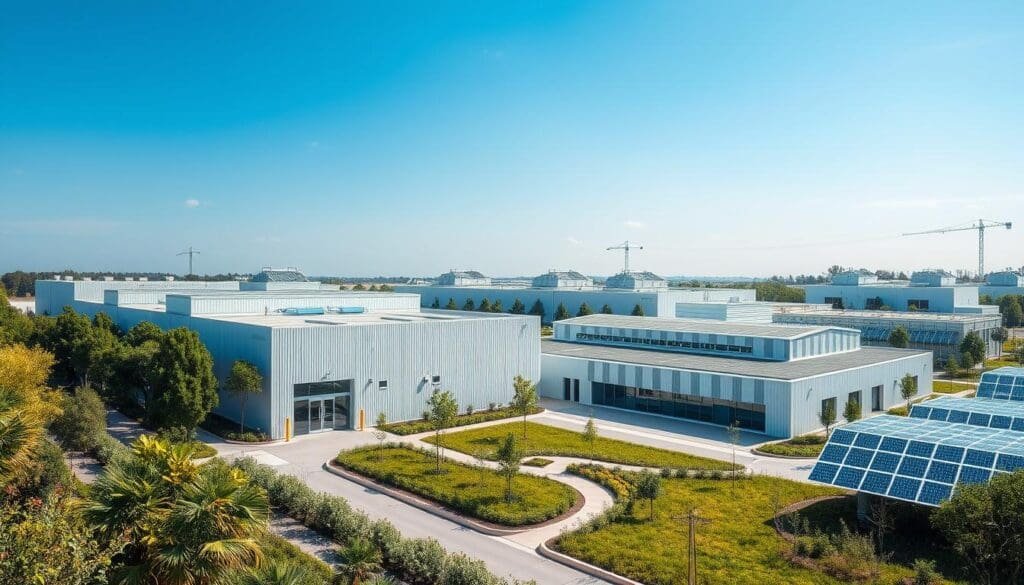Affordable and Green Ideas for Container Buildings for Versatile Applications
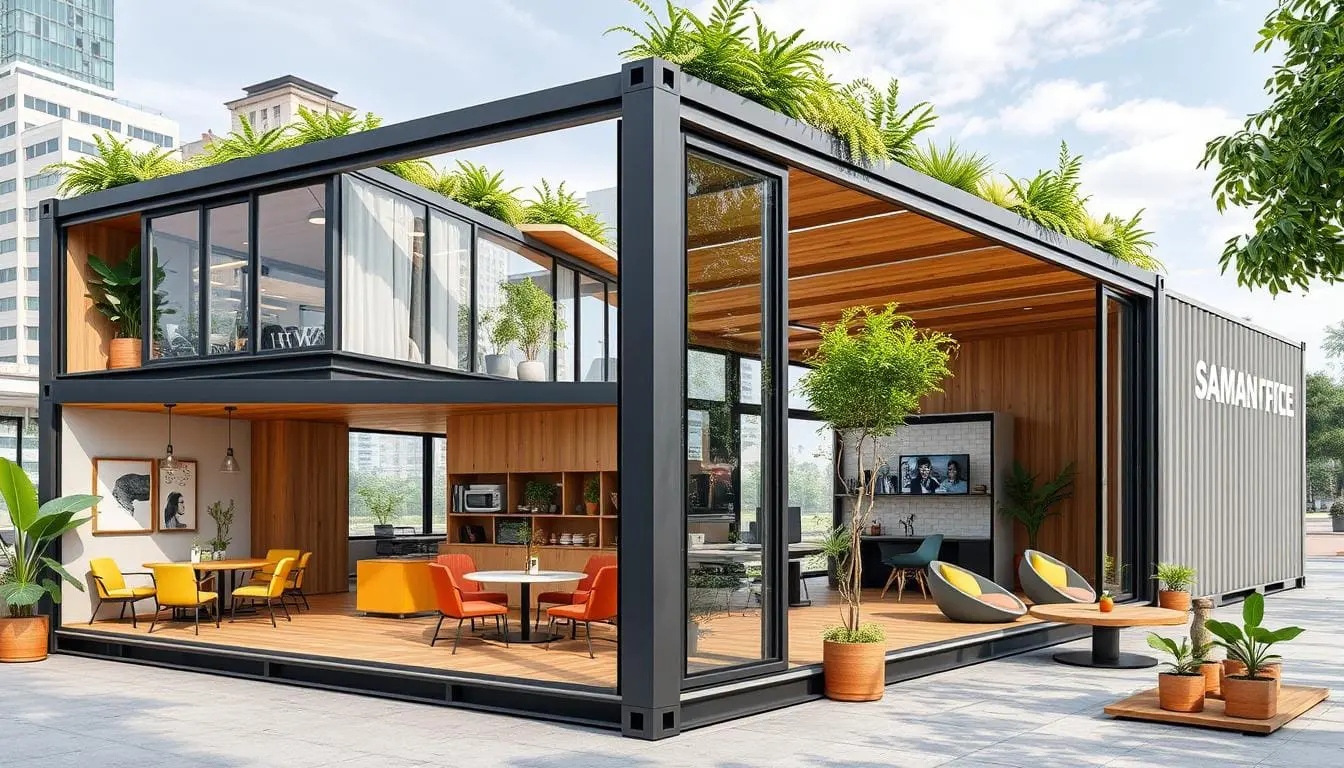
Have you thought about living or working in a repurposed shipping container? This idea is changing how we build in India. It offers a green and affordable way for homes, offices, and shops. Container buildings mix industrial style with eco-friendly living, shaking up old architecture ideas.
These structures, made from old shipping containers, are strong, use space well, and can be customized. They’re perfect for India’s fast-changing cities. They combine low cost, style, and green living, solving problems like growing cities, expensive homes, and caring for the planet.
Key Takeaways
- Shipping containers are built to handle harsh weather, making them tough and lasting.
- Container buildings are a cheaper option than traditional buildings, with many design choices.
- These new structures can tackle city problems like growing populations and high housing costs in India.
- Converted shipping containers are good for the environment, using green building and saving energy.
- The modular and portable nature of container buildings makes them great for many uses, from short-term to long-term homes and businesses.
Understanding the Rise of Container Architecture
Shipping containers have changed from just moving goods to becoming key parts of building designs. They are now used for homes, offices, and more. This change has made building more eco-friendly and cost-effective.
Evolution of Shipping Container Repurposing
Containers have changed a lot. They were once just for shipping but now are used in many ways. They are strong and can be used for anything from temporary shops to permanent buildings.
Global Impact on Sustainable Construction
Container architecture has changed the world of building. People all over are using them because they are good for the planet and save money. This helps solve housing problems and promotes using resources wisely.
Containers are great because they last long and can be changed easily. They help solve housing issues and support green building worldwide.
Benefits of Container Buildings in Modern Construction
Shipping container architecture and office designs are changing the construction world. They are especially popular in India’s cities. These solutions are cost-effective, versatile, and good for the environment.
Container buildings are cheaper than traditional homes or offices. Prices range from $10,000 to $50,000. This makes them a great choice for those looking for affordable spaces. Plus, they can be built quickly, so you can move in fast.
Containers are built to last, thanks to their sea transport design. They can handle heavy loads and harsh weather. To keep the inside comfortable, it’s important to insulate well.
- Versatility and Design Flexibility: Container buildings can be designed in many ways. You can create homes, offices, schools, cafes, and art galleries. They can even be built in unique locations.
- Mobility and Placement: Containers can be moved to different places. This makes it easier to use space in creative ways for sustainable projects.
- Customizability: You can make container buildings your own. Add features like solar panels and rainwater systems to make them energy-efficient.
Even though some places have rules about using containers for homes, they are still a great choice. They are affordable, durable, and can be designed in many ways. Container buildings are set to be a big part of future construction.
Innovations in Modular Container Designs
The rise of modular container designs has revolutionized the way we think about workspace and living environments. In recent years, innovative architects and designers have harnessed the potential of repurposed shipping containers to create versatile structures that cater to a variety of needs. These modular units are not only eco-friendly but also allow for efficient construction timelines and cost savings. Whether used as temporary setups for events or permanent installations for homes and offices, the adaptability of container designs is a testament to modern architectural ingenuity.
One of the standout features of this trend is the emergence of container office designs and plans, tailored for both individual entrepreneurs and large corporations. These designs showcase how containers can be integrated into professional settings, offering unique office spaces that inspire creativity and productivity. With functionalities such as open layouts, integrated technology, and sustainable features, these office spaces redefine what it means to work in a container. Companies are now prioritizing well-being and flexibility, opting for modular setups that can quickly adapt to changing workforce dynamics.
Moreover, the innovations in container aesthetics and functionality are noteworthy. Designers are increasingly focused on creating environments that are not just utilitarian but visually appealing as well. This has led to a broad range of customizable container designs that incorporate large windows for natural light, roof gardens to promote sustainability, and eco-friendly insulation materials. The result is a blend of modern elegance and practical design, allowing users to enjoy spaces that are comfortable and energizing.
As society moves toward more sustainable practices and flexible work arrangements, the trend toward modular container constructions is set to grow. Governments and businesses alike recognize the potential of these designs for urban renewal initiatives, addressing housing shortages, and providing emergency shelters. With ongoing technological advancements and a shift in how we perceive living and working environments, the future promises even more creative and efficient uses of modular container designs—making them a significant player in the architectural landscape.
Sustainable Features and Environmental Impact
Container structures, like shipping container buildings, are very sustainable. They use renewable energy sources like solar panels and wind turbines. This cuts down on the need for regular electricity.
They also have advanced insulation. This helps keep the temperature right, using less energy. This makes them very energy efficient.
Waste Reduction and Material Conservation
Using recycled containers cuts down on construction waste and saves materials. Green roofs can be added to improve insulation and reduce stormwater runoff. They also create more green spaces.
These features help lower the carbon footprint. This makes container buildings a green choice compared to traditional construction.
Carbon Footprint Considerations
- Retrofitting shipping containers into homes needs less energy than traditional building.
- The prefabricated nature of shipping containers means more of the building process happens off-site. This reduces waste and environmental disruption during construction.
- Shipping container homes need less new construction materials. This lowers environmental impact.
- The modular design of shipping containers uses space efficiently. This optimizes resource use.
By using container structures, we can make a big difference. We can reduce our carbon footprint and help create a greener future.
Discover how shipping container buildings contribute to a greener future through renewable energy systems and advanced insulation.
Smart Technologies in Container Architecture
The advancement of smart technologies has revolutionized various sectors, and container architecture is no exception. Container buildings, which repurpose shipping containers into functional spaces, have gained immense popularity due to their sustainability, versatility, and cost-effectiveness. Integrating smart technologies into these structures enhances their functionality while simultaneously addressing challenges such as energy efficiency and space optimization. By employing IoT devices and smart building systems, container architecture can transform into intelligent environments that adapt to the user’s needs, improving both comfort and operational efficiency.
One of the most significant benefits of incorporating smart technologies into container buildings is the potential for energy efficiency. For instance, smart energy management systems can be installed to monitor and optimize energy consumption, adjusting lighting, heating, and cooling based on occupancy and environmental conditions. By utilizing renewable energy sources like solar panels and integrating energy storage solutions, these innovative structures can achieve remarkable energy independence while reducing their carbon footprint. This not only appeals to environmentally-conscious individuals but also aligns with global efforts towards sustainable living.
In addition to energy efficiency, smart technologies facilitate enhanced security and convenience in container buildings. Advanced security systems, including surveillance cameras and smart locks, can be monitored and controlled remotely, providing peace of mind to occupants. Furthermore, smart home systems can automate everyday tasks, such as controlling appliances or managing climate settings, streamlining the user experience. This creates a seamless living or working environment within the confined spaces of a container, underscoring the adaptability of smart technologies in enhancing the overall functionality of these modern architectural marvels.
As the demand for innovative and sustainable living solutions continues to rise, the intersection of smart technologies and container architecture is poised for growth. Developers and architects are increasingly recognizing the value of integrating cutting-edge solutions into their designs, ensuring that container buildings are not only practical and eco-friendly but also technologically advanced. As we look towards the future, the potential for intelligent container structures is vast, paving the way for a new era of architecture that prioritizes sustainability, efficiency, and adaptability.
Cost-Effectiveness Analysis and ROI
Container buildings are a smart choice for businesses looking for cost-effective and sustainable office designs. They are cheaper to start with compared to traditional buildings. This is because they use shipping containers, which are easy to find and made in large numbers.
Building with containers is faster, which saves on labor costs and gets projects done sooner. Containers also need less upkeep, which means less money spent on repairs and maintenance. This makes them a cost-effective option in the long run.
In India’s competitive real estate market, container buildings can offer a good return on investment (ROI). Their unique appeal and green features make them stand out. Plus, you can build them in phases, which helps spread out costs and can increase ROI.
- A Markets and Markets report says the application modernization market will grow by 16.7% each year. It will go from $15.2 Billion in 2022 to $32.8 Billion by 2027.
- IBM did an experiment comparing virtual machines and containers. They found containers use resources better, letting them host more apps and use CPU more efficiently.
- In the same IBM test, using more containers than virtual machines cut response times in half. This was because of lower network delays. It also led to more throughput and efficiency.
- The IBM test showed containers can cut server maintenance costs by 75% compared to virtual machines. This means big savings on infrastructure costs.
By looking into the cost-effectiveness and ROI of container office designs and shipping container architecture design, Indian businesses can make smart choices. These choices help them use their resources well and grow sustainably.
Overcoming Challenges in Container Construction
Container buildings have emerged as a popular solution in the construction industry, offering a unique approach to overcoming various challenges associated with traditional building methods. One of the primary benefits is their ability to be repurposed quickly, making them an ideal choice for projects with tight deadlines. However, the journey to fully realizing the potential of container construction is not without its obstacles. From zoning regulations to insulation issues, navigating these challenges requires both creativity and adaptability.
Zoning regulations can often pose significant hurdles when building with shipping containers. Many areas have strict codes that dictate where and how structures can be erected, and container buildings may not always fit neatly within these guidelines. To overcome this, developers frequently engage in rigorous advocacy efforts, working closely with local government officials to educate them about the benefits of container construction. By highlighting the sustainability aspects and the rapid deployment possibilities, they can often secure the necessary approvals and pave the way for innovative development projects.
Another challenge that builders face is ensuring that container buildings meet the necessary safety and comfort standards. Insulation is a crucial factor, as metal containers can become excessively hot or cold depending on the weather. Creative solutions such as using specialized insulation materials or integrating systems like green roofs can help alleviate these issues. Moreover, the addition of energy-efficient systems not only enhances the livability of these structures but also aligns with the growing demand for sustainable living options.
Ultimately, overcoming the challenges associated with container construction requires a multifaceted approach, combining regulatory knowledge with innovative design solutions. As awareness of the potential benefits of container buildings continues to grow, so too does the creativity and resourcefulness of those dedicated to this approach. Through collaboration and a commitment to pushing the boundaries of conventional construction, the future of container buildings looks promising, offering unparalleled flexibility and resilience in an ever-evolving landscape.
Design Principles for Container Buildings
Designing container buildings needs careful thought about space and structure. Architects aim to use every inch of space. They create open-plan layouts and multi-functional areas for efficiency.
They also add local architectural touches. This makes the buildings fit in while keeping their unique look.
Spatial Planning and Layout Optimization
Planning the space in container buildings is key to making them functional. Designers use strategies like:
- Open-plan designs to make spaces feel open and connected
- Creating areas that can be used for different things, like living, dining, and working
- Using windows and doors to let in natural light
- Smart storage solutions to use every inch
Structural Modifications and Safety Measures
Turning shipping containers into homes needs careful changes to the structure. Architects and engineers focus on:
- Making openings for windows, doors, and vents for air and light
- Strengthening the container to hold more weight and support extra loads
- Adding insulation to save energy and control the climate inside
- Ensuring fire safety and emergency plans for the people inside
In India, where space is precious, designers stack or line up containers. This creates bigger, more roomy buildings. It meets the needs of the local market.
Learn more about container plans architecture that optimizes space and enhances structural safety while keeping sustainability at the forefront.
Innovative Applications in Commercial Spaces
The world is moving towards sustainable and flexible solutions. Container office designs and shipping container buildings are becoming more popular. They are changing commercial spaces, offering many benefits to businesses.
One cool use is for trendy pop-up shops. Companies use containers to create flexible and mobile stores. This meets changing market needs and customer tastes. These small, customizable spaces let entrepreneurs try new places and ideas, promoting creativity and quick action.
- Containers are now used for unique offices, meeting rooms, and co-working areas. They are cheaper than traditional office spaces.
- Cafes and restaurants in containers are becoming hits. They offer a fresh dining experience that draws in customers.
- In cities, containers are turned into temporary event spaces, art galleries, and exhibition halls. This shows how versatile container architecture is.
These uses show how container office designs and shipping container buildings meet different business needs. They support sustainability and creative design. This helps businesses succeed in changing markets and customer tastes.
Explore innovative container office designs and plans to find versatile solutions for co-working spaces, trendy cafes, or modular event venues that balance style and sustainability.
Residential Solutions and Living Spaces
Container structures are becoming a big deal in India for affordable, green homes. They offer small, smart living spaces perfect for cities or temporary stays. This shows how shipping container design can change our homes.
Single Container Home Designs
Single container homes use smart storage and furniture to save space. For instance, a Pune farmhouse used 6 containers for a 960 square-foot home. These homes can have verandas, terraces, and green insulation, making them both useful and nice to look at.
Multi-Container Housing Projects
- In Dehradun, a project used several containers for bigger homes and apartments. It’s a green way to meet housing needs.
- In Bhor, near Pune, containers were turned into a Domino’s pizza place. It shows containers can be used in many ways.
- A Talegaon project near Mumbai used 8 containers for a 640 square-foot home. It has a courtyard and garden on the roof.
These projects show how shipping container architecture design can offer affordable, flexible, and green homes. They meet India’s growing housing needs.
Container homes are becoming a key solution in India for housing. They are durable, flexible, and cost-effective. They are set to shape the future of homes in India.
Climate Control and Insulation Solutions
Keeping a comfortable temperature is key in container plans architecture across India’s varied climates. Insulation like spray foam and eco-friendly materials help keep shipping container buildings cozy. Ventilation systems ensure air moves well, often using natural methods.
Container buildings use smart designs to manage heat. This includes passive solar, special windows, and reflective coatings. In hot areas, green roofs add extra insulation. These features make container buildings comfy and energy-saving, fitting well in India’s climates.
- Spray foam insulation has R-values of 6, 12, and 18, lasting 80 years.
- Batt insulation offers R-values of 13 and 19, lasting 100 years.
- Mineral wool insulation has R-values of 13 and 26, being non-flammable and water-resistant.
- Foil insulation cuts down heat loss by 80%, saving 20% on costs.
Good air flow through container ventilation helps control temperature and humidity. It also cuts down on smells and keeps air clean. Gateway Containers provides air vents, turbines, and air conditioning systems for the best climate control in shipping container buildings.
Container buildings work well as homes, workspaces, and storage. They show how versatile and adaptable these structures are. With help from Gateway Containers, you can plan and build shipping container projects that meet your climate needs.
Discover shipping container architecture designs that include advanced climate control systems and eco-friendly materials tailored for India’s varied climates.
Container Buildings in Urban Development
India’s cities are growing fast, and container buildings are key in urban planning. These structures offer quick solutions for needs like housing, schools, or healthcare. They can be stacked to use space better in crowded areas.
Container architecture is also flexible, adapting to the city’s changing needs. This flexibility supports sustainable growth and efficient use of resources. India’s cities are seeing the value in container office designs and shipping container architecture plans.
Using repurposed shipping containers also supports sustainability. It reduces the need for traditional materials, helping India grow responsibly. This approach is part of the country’s efforts to conserve resources.
Explore container structures designed for efficient urban development, offering quick and sustainable solutions for India’s growing infrastructure needs.
The Future of Container Buildings in India
As urbanization continues to accelerate in India, the quest for innovative and sustainable construction solutions has led to a growing interest in container buildings. These structures, made from repurposed shipping containers, offer a unique blend of affordability, environmental sustainability, and design flexibility. The potential for container buildings to address the country’s pressing housing needs, especially in rapidly urbanizing regions, is vast. With the rise of the middle class and increased migration to cities, the demand for affordable housing has never been more critical, and container buildings could be a crucial part of the solution.
Container buildings are not only cost-effective but also drastically reduce construction time compared to traditional methods. The modular nature of these structures allows for swift assembly and customization, enabling developers to respond quickly to changing market demands. India’s thriving start-up culture has already seen several companies venture into this space, creating innovative designs that cater to various sectors, from residential units to hotels, offices, and even pop-up retail spaces. This versatility showcases how container buildings can adapt to diverse needs while promoting efficient use of resources.
Another vital aspect of container buildings is their potential contribution to sustainability. By repurposing materials that would otherwise languish in waste, these structures minimize the ecological footprint associated with new construction. Additionally, container buildings lend themselves to incorporating green technologies, such as solar panels and water recycling systems, aligning with India’s commitment to sustainable development. As environmental consciousness rises among consumers and businesses alike, the appeal of container buildings will likely increase, driving further adoption.
However, the future of container buildings in India is not without challenges. Regulatory hurdles, land acquisition issues, and societal perceptions about living in such unconventional structures can impede broader acceptance. Nevertheless, with increasing focus on innovative urban solutions and investment in sustainable practices, container buildings are poised to become more prevalent in India’s architectural landscape. By harmoniously blending modernity with sustainability, container buildings could potentially reshape the future of urban living in India, creating not just homes, but vibrant communities that thrive within our rapidly evolving cities.
Uncover innovative shipping container architecture plans shaping the future of sustainable living and urban development in India.
Conclusion
Container buildings are revolutionizing the construction industry, offering innovative, cost-effective, and eco-friendly solutions for modern living and working spaces. Their versatility, durability, and sustainable features make them ideal for addressing the challenges of urbanization and environmental conservation. From single-container homes to large-scale commercial projects, these structures are paving the way for a greener and more resource-efficient future.
At SAMAN Portable Office Solutions, we specialize in delivering tailored container solutions that blend design innovation with functionality. Whether you’re looking to create a modular office, a custom residential space, or a unique commercial project, we are here to bring your vision to life.
To learn more about our commitment to sustainable construction and innovative container solutions, visit our About Us page. Let us help you build a future that’s affordable, green, and uniquely yours.
FAQ
What are the key advantages of container buildings in modern construction?
Container buildings are cost-effective and versatile. They are durable and can be customized. They also use space efficiently. This makes them a sustainable and innovative choice for homes, offices, and commercial spaces in India.
How do container buildings contribute to sustainability and environmental responsibility?
Container buildings are green because they use renewable energy and advanced insulation. They also have green roofs. This reduces waste, saves materials, and lowers carbon emissions compared to traditional buildings.
What are the design principles and considerations for container buildings?
Designing container buildings means making the most of small spaces. Open-plan layouts and multi-functional areas are key. You also need to make structural changes and ensure safety. Adding local architectural touches is important too.
How are container buildings being used in commercial and residential applications?
Container buildings are used in many ways. They can be trendy pop-up shops or unique offices. They are also used for co-working and even homes. They are affordable and flexible for different needs.
What are the climate control and insulation strategies for container buildings in India?
In India’s varied climate, keeping buildings cool and warm is key. Insulation, ventilation, and passive solar design help. Green roofs or walls also improve comfort and energy use.
How are container buildings being integrated into urban development strategies in India?
Container buildings are part of India’s urban growth plans. They help quickly build infrastructure and use space well. They can be stacked vertically and changed as cities grow.
 Container Cafe
Container Cafe